Other
Pins and Needles
22 05 24 15:43
SUE
Although I have grown up with sewing and sewers in my life, it has never captured my interest, until recently. I have horrible memories of sewing classes in Year Seven. We were supplied with rectangular brown, cardboard sewing boxes, which held all our supplies and the current sewing task. All went relatively smoothly during the first half of the year as we learnt to use the machines and made our cookery apron and cap for Home Economics classes in Year Eight. Then we graduated to making a white, lawn, lace trimmed slip with french seams.
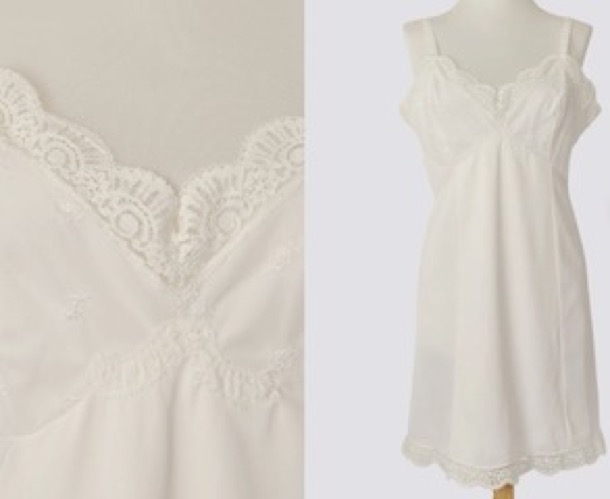
I must have made several mistakes and had to unpick the french seams around the bust several times and my work became very grubby and worn. I looked with envy at the neat and pristine garments of some of my classmates. Starting again was not an option so I decided to smuggle it out and fix it at home. This was strictly forbidden! In the general busyness in the storeroom as the girls put their sewing boxes on the shelves, I hid the offending item under my blazer. Even at home it was very difficult to resew neatly, because of all the needle holes and general grubbiness. At least I could move on with the easier straight seams and the hem. Thank goodness I was not caught smuggling the sewing back into my sewing box. I finished the garment but never wore it. I am sure I would only have received a D, which I would not have liked.
My next foray into sewing was in the first year of my Art and Craft course. The first year was “dressmaking”. I did not enjoy it much, but it was not horrific, as the petticoat had been. I certainly did not want to teach sewing, and I was never asked to, thank goodness.
Surprisingly, I have recently started sewing again. I, like many others, started sewing in lockdown during the Covid pandemic. I am part of a widespread sewing resurgence, facilitated by the technological advances that give me access to fabrics and patterns all over the world and in Melbourne too.
Choosing the fabric and pattern are the aspects of dressmaking that have changed the most. For instance, I recently bought a winter coat pattern and fabric. Once, I would have gone to a local shop and leafed through thick, well thumbed and worn.pattern books by Butterwick, McCalls and Vogue.
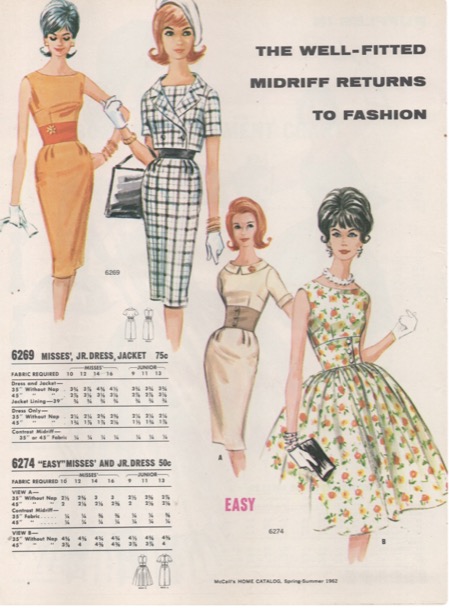
Instead, I chose my vintage coat pattern online, from a business in Germany. It was converted to a PDF format and delivery was almost instantaneous. Then the fun began as the pattern had to be printed. Two options were available for printing. The pattern could be printed on a home printer in A4, with the disadvantage of the pages needing to be joined with sticky tape. The alternative was to go to Officeworks and have the printing done for me, as one large sheet.
I have also discovered the joys of shopping worldwide for fabric. One of my favourites is a haberdasher in Hull in the UK, whose ethos is the creation of long lasting, wearable clothes from their patterns and their sustainably and ethically sourced fabrics. Merchant and Mills is part of a worldwide niche market, that is a reaction to the fast fashion industry, where very cheap, mass produced garments are expected to be thrown away after only a few wears.
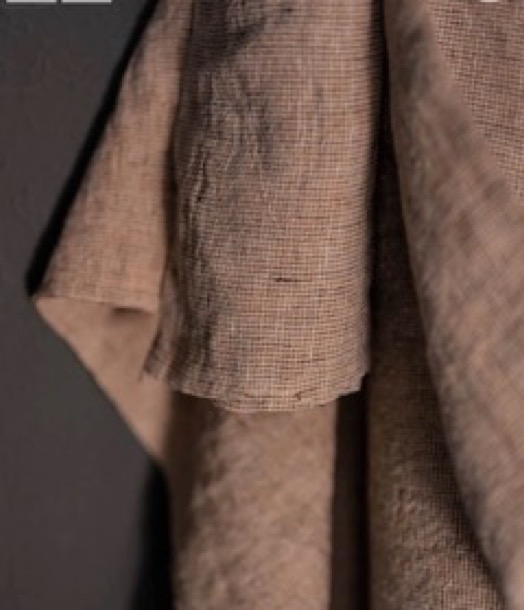
‘This European laundered linen, tumbled at the mill for softness, is a dusty peach and dark brown. It is produced in small batches in Eastern Europe where there is a strong heritage of spinning and weaving linen fabric’
MARGARET
One of the joys of retirement is having time for the little ones. For me, this included making special things for them, mostly sewing and knitting, and always geared to their particular interests and preferences.
Sometimes the occasion was birthdays and Christmases, but sometimes special requests came my way.
The first of these was a Christmas: matching pink fairy dresses for the three little girls. Here is Harper in hers:
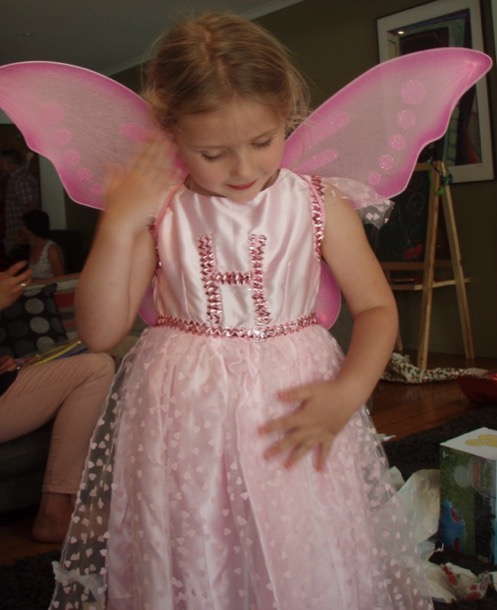
Later on, Harper’s colour preferences changed. For more than a year, she was all about cyan. You and I might have called this colour aqua or turquoise.
This was the colour specified for her special request for a jumper with a bunny on it for her, and one with a girl on it for her bunny.
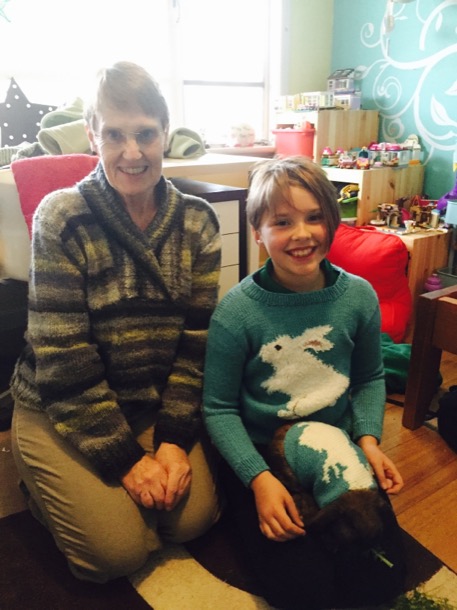
Aurelia was exactly the generation to be all about Disney’s Frozen. Her first frozen dress was a bought one, and she wore it out, before she tired of it. Thus it was, that my first Frozen job was to rehabilitate it:
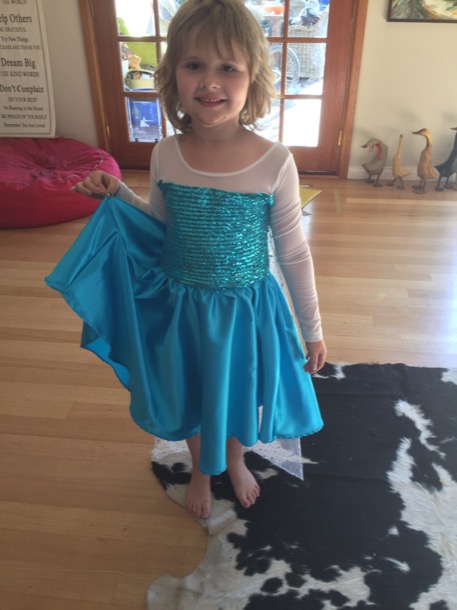
Then, when Frozen 2 came out, with that green dress, Aurelia and I trooped off to Spotlight to choose fabrics for her new one.
Here, she models the front and back of the final product:
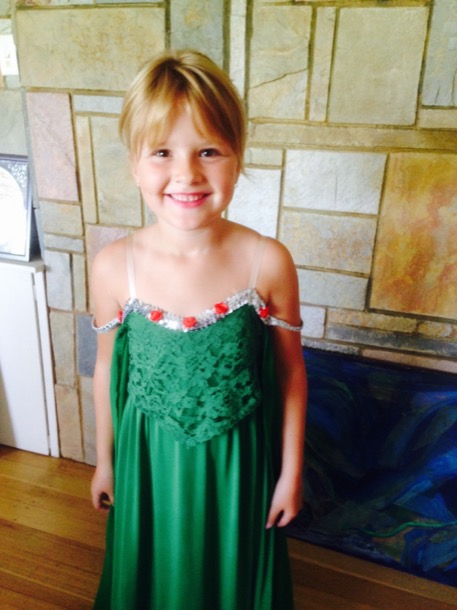
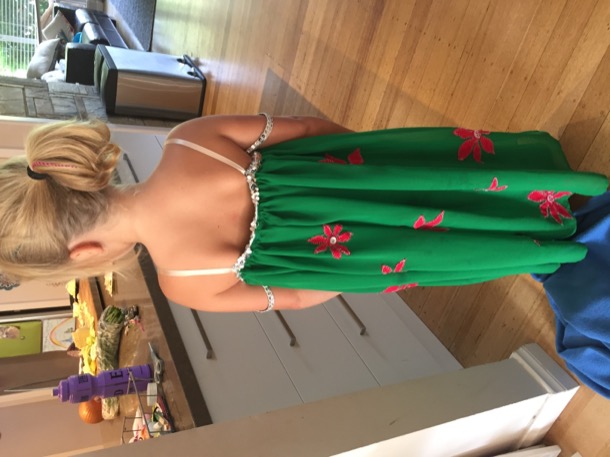
When my own grandchild came along, son of an artist, my initial contribution was a lacy baby blanket, not baby blue, but dark grey.
His first winter coat was also designed by Katherine, and made by me:
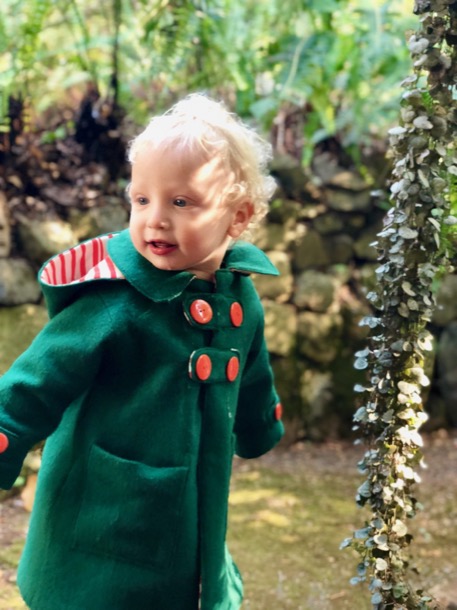
After a while I began knitting him jumpers to match his preferences.
The first one was Percy, his favourite Thomas the Tank Engine character:
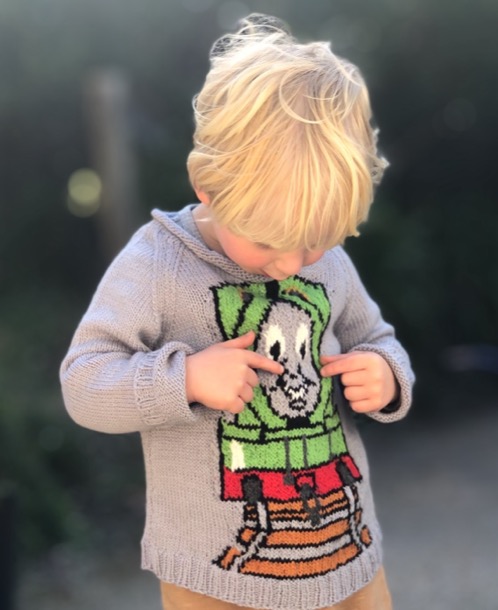
Then Bluey:
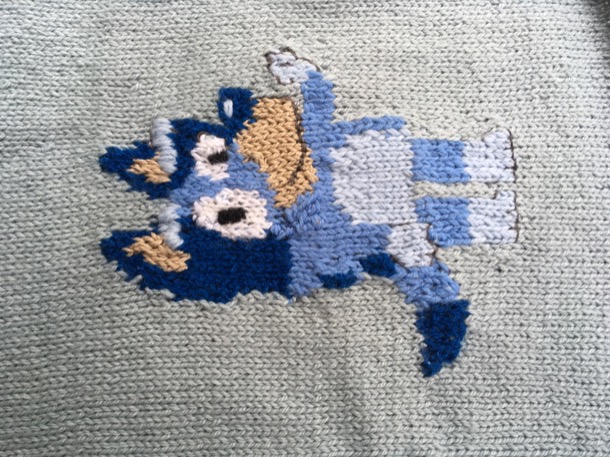
Optimus Prime:
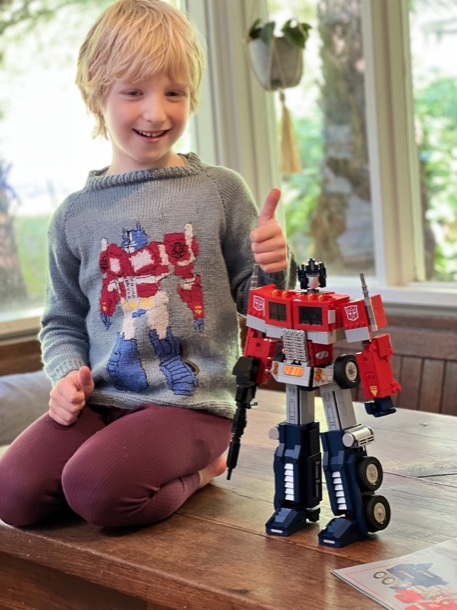
And, the most recent, a Minecraft T shirt, with, by request, a Sniffer:

THE ACCIDENTAL CRAFTIVIST.
In 2013, Chris and I became involved with the community protest against the building of a McDonald’s in Tecoma.
Over time, this evolved into groups of protestors spending many hours standing holding signs on the main road, and maintaining a vigil at the back of the building site.
My favoured place was sitting at the back gate, with a camp chair. Of course I took my knitting.
Here is a typical scene from “the site” at that time. The police were frequent visitors. For a long time, there was stalemate. We were backed by the union movement, and no building contractor could be found.
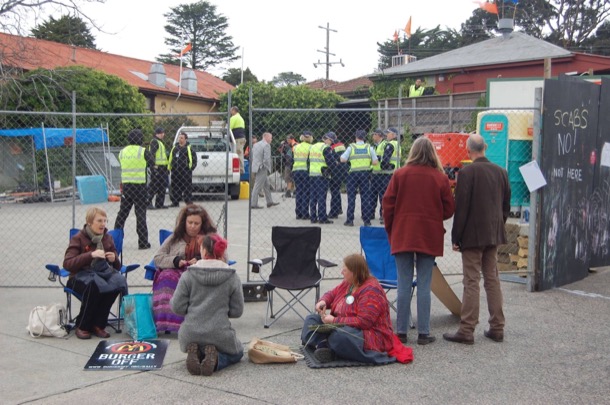
As the building progressed, we were no longer able to meet at the back gate. Every morning my friend Jan put up a little shelter we called “headquarters”. Every truck had to run the gauntlet of polite older women explaining why they should not enter the site.
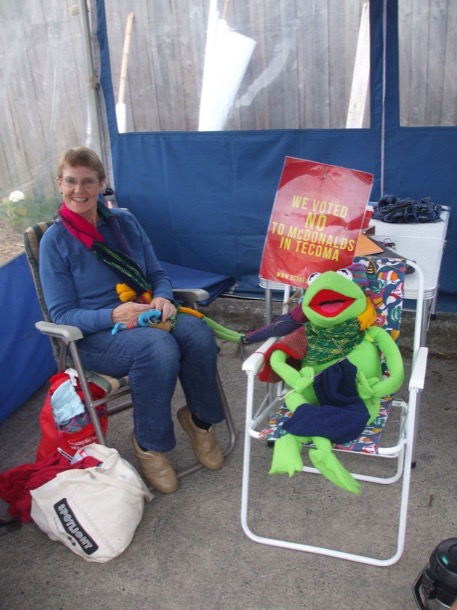
The Banner.
After a while, as we all finished off our various projects, we began knitting squares with all our scrap wool.
We became a group of close friends, and called ourselves The Picket Knitters.
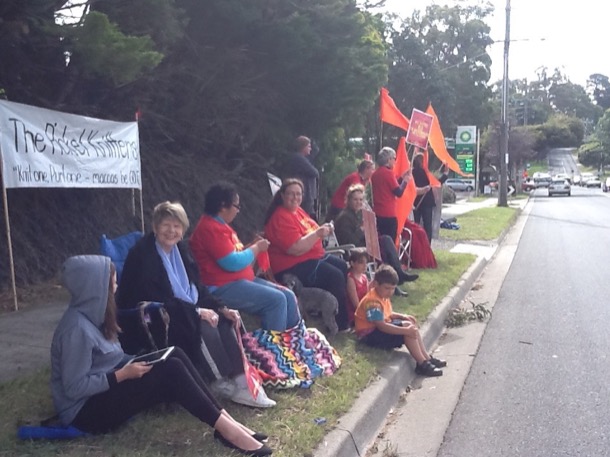
As our movement became more and more well known, we had people from all over the place sending squares. We embroidered the place of origin on some of them. This one came from Cairns.
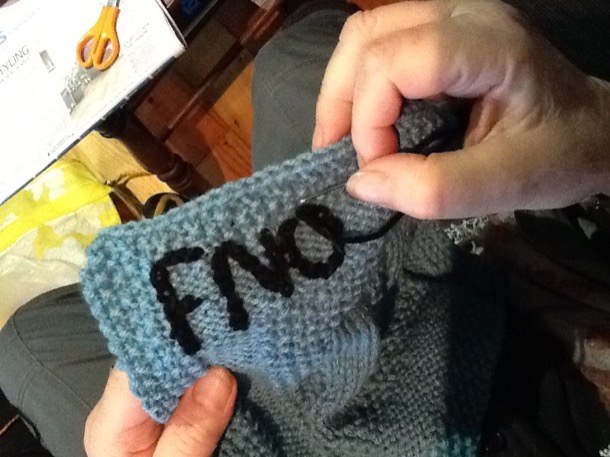
Eventually we put all the squares together, and made it into a banner.
By the time we had the official launch of the banner, the building was under way. Here, the knitters crouch behind the road barrier, with crossed needles. Sue and I are both there.
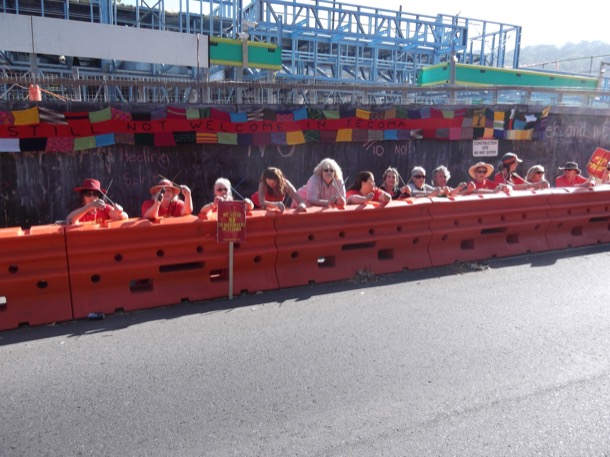
The local papers loved us.
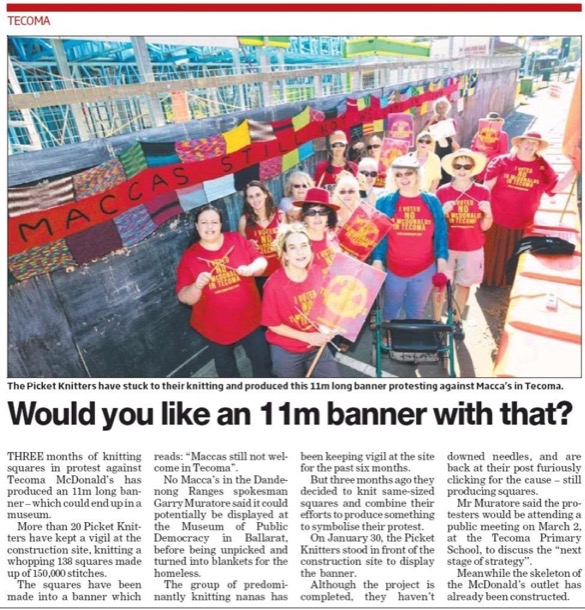
Eventually, we presented the banner to our fellow craftivists, the Knitting Nanas of Toolangi. We reconfigured the squares and it became part of their Great Tree Project.
Here it is decorating the base of one of the precious Mountain Ash trees.

Gnomageddon
“Gnome Maccas”, derived from our “No Maccas in Tecoma” slogan, spawned a range of Gnome related activities. The biggest of these was our Gnomageddon, where the community gathered to break the Guinness Book of Records record of the most people dressed as gnomes.
I made all our knitters a red gnome hat.
Here are a few Picket Knitters in their gnome outfits.
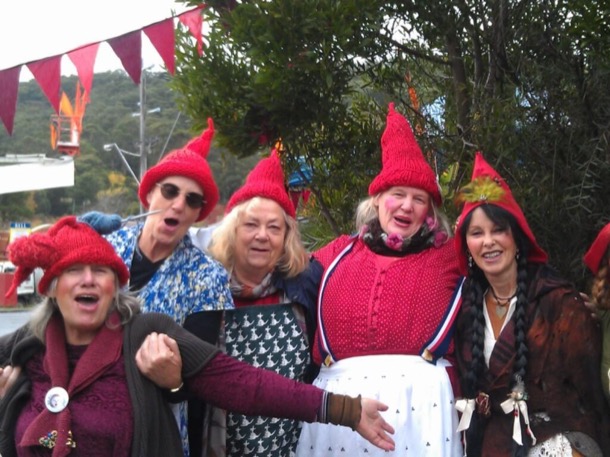
And even a gnome rat.
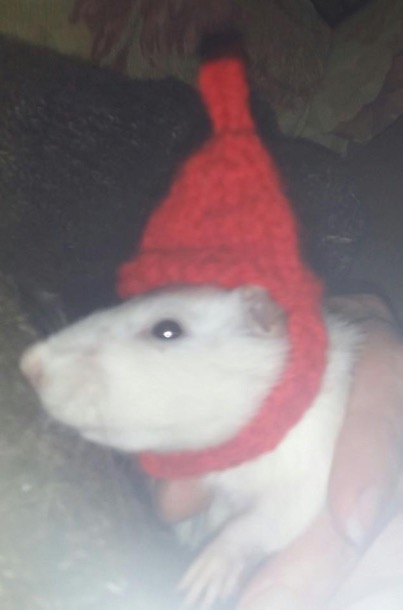
Once the McDonald’s in Tecoma opened, albeit usually deserted and initially the lowest grossing McDonald’s in the country, we continued to meet at each others houses.
In 2016, we all created tea cosies and entered them in the Fish Creek Tea Cosy Festival.
Here is my offering:
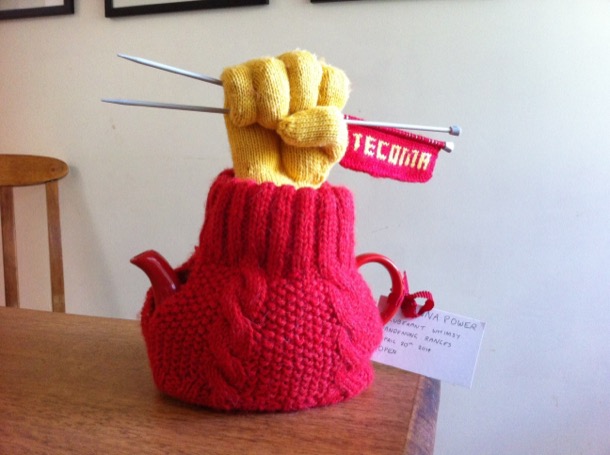
The local paper chased us up to find out what The Picket Knitters were doing now.
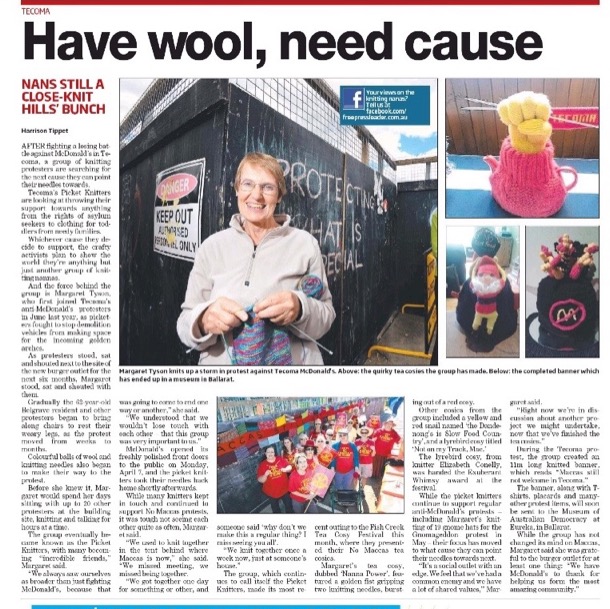
This article prompted a phone call from a Melbourne Radio Station shock jock. Based on the tone of the article, he was very excited by the idea he could paint us as serial protesters for hire. I very much enjoyed my live interview with him, where his aim was completely transparent. When he pressed me for possible “causes” we might move on to, clearly hoping for left wing politics he could ridicule, I listed a range of completely apolitical charities, and played my role of “just an ordinary person” who “of course didn’t want a McDonald’s so near the forest”.
We no longer knit together, but we do meet every fortnight for a lavish lunch and a long chat about how to put the world to rights.
ALICE
This is Sue and Margaret in about 1955.
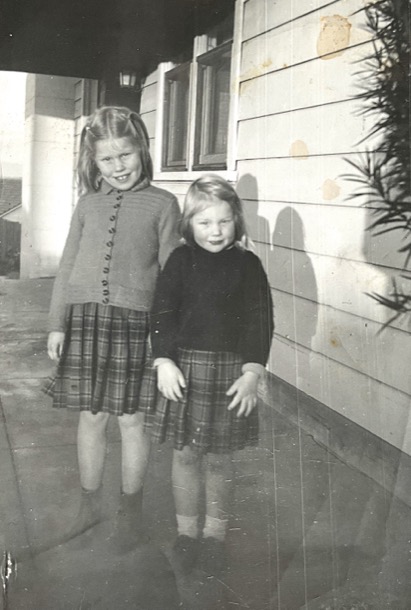
Two small girls, sisters, on a cold winter day in suburban Box Hill in the nineteen fifties.
What does it tell us of life then and the different world we lived in?
From the bottom up, starting with our shoes: We both are wearing lace up shoes, Margaret’s may have been hand me downs. She had a lot of these, as clothes were an expensive item to buy. Mine were my school shoes and these shoes were our one pair: worn to school or kinder, to play, to visit and to church on Sunday. On wet days we wore galoshes over them. These were rubberised over shoes, that fitted over the shoes, saving both feet and shoes from a soaking.
The life of our expensive shoes were prolonged by being reheeled by our father using his shoe last.
He also put little u shaped metal clips on the outer edge of the heel and toes to prevent wear on those vulnerable areas. Amazingly, looking for photos of ‘vintage ‘heel and toe clips I came across a host of You Tube videos of how to fix them to your shoes It is still a thing on leather soled shoes. The two worlds meet.
Our cotton socks were much the same as today. We only had a few pairs. Above these ankle socks were bare legs, in the depth of winter. We both remember cold legs on winter mornings: little girl plump legs with that blueish pink tinge.
At least we had woollen skirts that kept us warm. Once again only one, and home made by our mother. They were always tartan, pleated and then sewn to a cotton calico bodice.
The cotton bodice was at times a little grubby, but was usually hidden under our hand knitted woollen jumper or cardigan. Under this was a singlet possibly woollen. Margaret remembers shocking our mother. School Open Day was quite a big deal with many, mainly mothers in attendance. Mum walked into class confronted by an oblivious Margaret without her jumper on, as it was hot. She was sporting her tartan skirt, complete with a grubby bodice held up at the shoulder with a large safety pin. What a sight!
We think we wore these garments for almost everything we did during winter, from roller skating to going to school. We vaguely remember having twin sets to wear for best with the pleated skirt and a winter coat and raincoat, all worn with.our school, lace up shoes.
And then there was summer sewing.
It’s the week before Christmas. School has broken up, and four children, a dog and a cat clutter up the house. It’s hot, and there is no air conditioning. Not even a fan.
Christmas presents are partly organised but still require a few trips to Chadstone Shopping Centre.
In the garage, Dad is tuning the car, ready for its two hour trip to Shoreham camp. The tent and most of the camp furniture has already been set up, but a trailer full of odds and ends is still to be packed.
The plan is to leave early on Boxing Day.
In the centre of the house, between the kitchen and dining room, is a scene of colourful mayhem.
The sewing machine runs all day and into the night.
Cotton fabrics have been bought, perhaps at a discount fabric shop. They are spread out across the floor, with well used pattern pieces pinned to them. Mum crawls across the fabric cutting out multiple pieces. She makes enough shorts and tops for us each to have a set to wear and a set in the wash. There are hand-me-downs involved for me, the second child.
We find it hard to remember the details of her sewing. How were the seams finished? Were the necklines bound or faced? The hems were all hand sewn: we can both remember hems coming undone.
She didn’t cut the thread ends as she went, there were always multiple loose threads to trim off at the end.
In this photo, taken about 1958, little Sue and Margaret stand in the centre, in that year’s shorts and striped tops.
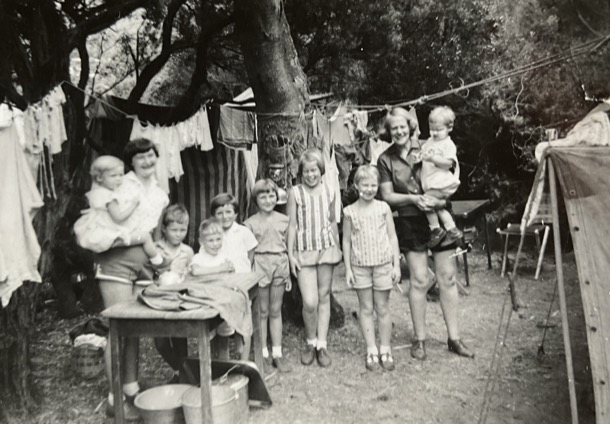
AUNTIE BERT
Our Great Auntie Bert was an important person in our lives and those of our extended family. We have fond memories of her kindness, but it was only as we researched the position of sewing in our family history, that we fully appreciated her dressmaking legacy. We knew that she had had a career as a dressmaker, and had run her own business. She passed on her dressmaking and fitting skills to Margaret and me, and to our mother and Auntie Marge, but we had not appreciated the thoughtfulness and kindness that was an intrinsic part of each garment.
My crushed strawberry viyella dress and Margaret’s mustard yellow check one epitomise this:
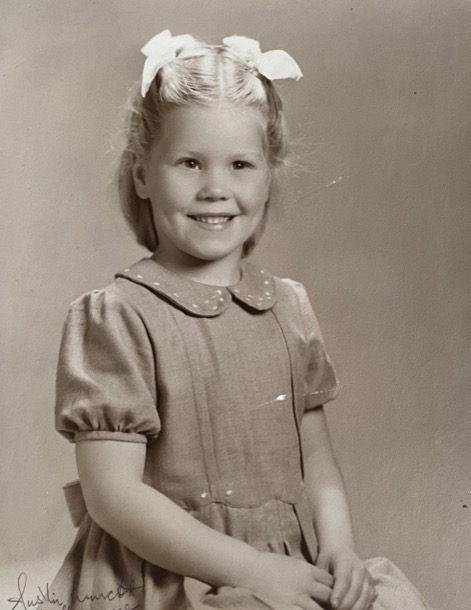
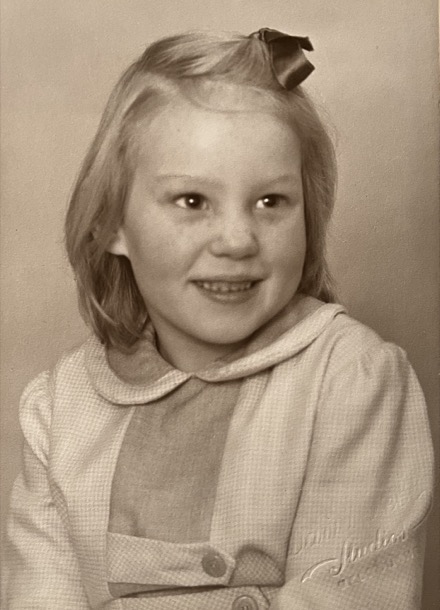
Now that I am sewing more, I can begin to appreciate the level of skill and detailing involved in the creation of these winter dresses. Margaret’s dress is made in a mustard check with a plain contrast panel and collar insert, all beautifully sewn and constructed. My dress, in one colour has detailed pleating on the bodice and skirt and a scalloped edge stitched waist that would have been fiendishly difficult to sew. Hopefully Auntie Bert would have enjoyed creating these “best” dresses, in which her love and care for her family are so evident.
Auntie Bert was also called upon to make many “best” dresses for the adult women of the family, some of them wedding outfits.
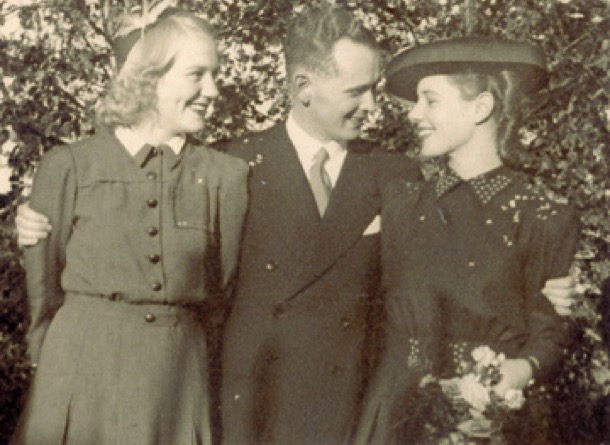
In my late teens when Auntie Bert was living in the flat behind our house, she made me a beautiful tweed winter overcoat , fully lined. I wish I still had it. During the process she taught me some of her tailoring techniques, for instance how to attach hair canvas to the collar , stitching it to ensure an even roll over.
During the last years of her life Auntie Bert lived with her sister’s family at the Cockatoo farm, as we explained in our post ‘Auntie Bert: A Sterling Character.’. During this time she was mostly clad in clothes she had made. In winter, she wore straight woollen skirts and layers of woollen jumpers and cardigans. In summer she wore a dress and cardigan, more often than not, covered by an apron. We never saw her in a beanie, which her sister wore constantly, even inside.
Sewing in many guises has been a feature of the lives of women in our family for generations. Probably there are more stories even further back that we are unaware of. In this short story we have gone from treadle machines, paper patterns and sewing for necessity, to sewing for pleasure and sewing as a form of protest.
Comments
Women's Work
25 10 22 16:51
Like women throughout history, most of the women in our family have had the primary job of parent and homemaker. Those homes range from simple pioneer cottages to majestic residences with grand staircases and sweeping verandahs. Nearly all of those women have also done paid work. And some of those who have not been specifically employed, have had supporting roles in their husband’s careers. Some jobs have been done by different family members across different generations.
None of our women have had traditional men’s careers, but, across the generations, we have covered a wide range:
AGRICULTURE (Dairy maid, Famers’ wives)
HEALTHWORK (Doctors’ wives, Aide, Occupational Therapy Assistant)
HOSPITALITY/TOURISM (Publican, Office Administraion, Horse Trail Guide)
RELIGIOUS SERVICE (Lay Preaching and other good works, Nun)
ADMINISTRATION (Postmistress, Sales Administration Supervisor, Office Administrator)
THE ARTS/CRAFT/DRAFTING (Whitework, Semco and Dressmaking, Drafting and Drawing Office, Drafting, Drawing and Card production, Art and Craft Activities for At Risk Children, Set Design and Construction, An Artist in the Hills)
RETAIL (Grocer, Checkout Chick)
SCIENCE (Laboratory Work)
EDUCATION (Teacher)
AGRICULTURE
Dairy Maid
Our paternal great, great grandmother, Catherine Bourke, née Kelly, worked as a dairy maid in Limerick before marrying Michael Bourke, and emigrating to Australia, in 1839. When they arrived in Melbourne, their first job was managing a dairy farm in Moonee Ponds. Catherine’s knowledge and skills no doubt influenced this decision.
The “famers’ wives”
A recent (2022) Guardian article tells us that, until 1994, women could not list “farmer” as their occupation on the census form. Instead they were viewed as “non-productive silent partners”. Even today, when 49% of real farm income is contributed by women, our image of an Australian farmer is almost entirely male. This puts “farmers’ wife” in this exploration in a particular light.
Another interesting aspect of these women from our family history is the divide between the wealthy squatters and the ordinary people of the land.
Martha Rye, the “poor little thing”, whose story we told in the June 2016 post, was a “farmer’s wife”, as was her mother, Elizabeth. Both of these women had very large families.
Elizabeth, our great great great grandmother, had eleven children. We can work out quite a bit about Elizabeth from a newspaper story, written about her husband, Adam’s life. She had worked in service, as a housekeeper, before she and Adam emigrated to Australia, in 1848. She could read, but not write.
They grew potatoes and onions, first on a rented farm near Geelong, then on two acres in Broadmeadows. The whole family would have been involved in the farm work, especially at harvest and market times.
We know that Adam not only worked as a labourer on neighbouring farms, but also spent time away trying his luck on the goldfields. It would have fallen on Elizabeth and the children to keep things going on the farm.
Martha, Elizabeth’s daughter, was married to Joachim. They would have had long days on the dairy farm, Heather Farm, near Kilmore. We learned a bit about her from her daughter Sarah, born in 1866. We wrote about this in August 2016. Sarah wrote with sentimental nostalgia about milking the cows, Blossom, Peggy and Strawberry; feeding poddy calves; working the separator; and rearing seventeen children. But between the lines, one can see the massive workload.
Around the same time, our paternal great great grandparents, John and Johanna McCormack, bought their 15,000 acre grazing property, Balham Hill, fifty kilometres to the west. So, in a sense, Johanna was also a “farmer’s wife”. But what a different life! John, a Justice of the Peace, and community leader, had staff to attend to the farm. Their four surviving children all went to boarding school in the city, for their secondary education.
John’s father, also called John McCormack had also been a wealthy grazier. His wife, Grace, lived there at the property “Landscape”, at Tallarook, until her death aged 83. I doubt she would have thought of herself as a “farmer’s wife”.
Two generations on, Johanna’s granddaughter, our Auntie Tish, also married a farmer, near Warrnambool. Matt Rae was probably more of a hands on farmer than John McCormick, but he, too, was considered a grazier, and Tish’s life did not run to milking cows and feeding poddy calves.
Around 1950, close to the time Tish became a “farmer’s wife”, our mother’s aunt, Beat, and her husband Bill, sold their Surrey Hills grocery and bought land for a dairy farm in Cockatoo. The activities on this farm were similar to those at Heather Farm, a hundred years earlier: milking, feeding calves, working the separator. The difference in their lives is technological. An electric milking machine and separator, tractors, hay bailers, meant that they ran a dozen cows instead of three. And they had three grown children instead of seventeen. Nevertheless, they all had to work hard to make the farm pay enough to support them all. We wrote in detail, in our November 2017 post, about our childhood visits to this farm. There we described Beat’s pigs. This was her major farming contribution. She was not just a “farmer’s wife”, but actively involved in the decision making and physical work of the farm.
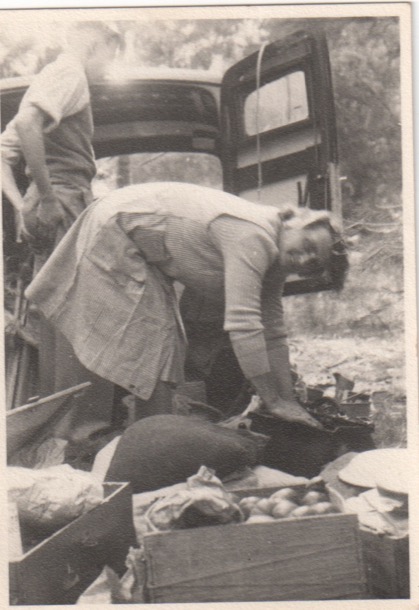
Auntie Beat
HEALTHWORK
Health work does not feature much among the women in our family. there are no doctors or nurses, that we know of.
Doctors’ wives
Our grandmother, Grace, and her daughter, Joan, were “Doctor’s Wives”. Wealthy, well connected, pillars of society, these women had no real job. In both cases, their husband’s surgery was within their house, but they were not required to deal with actual patients.
Among the women in our family, there are a few cases of unskilled health work.
Aide
Like so many women, our mother, Alice, “went back to work” when her youngest child was about ten years old, in 1966.
The only job she had had, since leaving school aged seventeen, was the wartime munitions work she had done at Maribynong, which today would have been called Lab Technician.
What skills did she have to draw on, apart from housework and parenting?
So her job as an “aide” at Lady Herring Spastic Centre was a low paid, unskilled one. She was assigned, with one other carer, to a “class” of Cerebral Palsied kids roughly the same age, none of whom had the ability to speak, and many of whom could not feed themselves. This was before the days of Communication Boards, so even the most able kids could not communicate much.
I, too, had a job at Lady Herring, after I finished school, and before I began the university year.
The centre was in Malvern, and Alice, and I, for the few weeks I was there, travelled by tram, along a very familiar route, down Riversdale Road.
There were a few qualified staff at the centre, physiotherapists, occupational therapists, but the program, such as it was, seemed to be up to people like Alice to devise. With the exception of the bus drivers, the whole staff, including the boss, was female.
The kids commuted on a special bus, and spent the whole day at the centre. Much of the time was filled with dealing with their physical needs, but there were excursions, shopping trips, walks around the neighbourhood, music sessions, and a memorable overnight “camp”. Although low status and poorly paid, it was stimulating, challenging work.
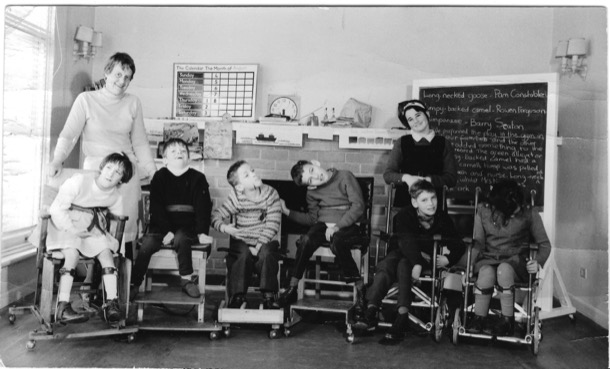
Alice with her "class"
Occupational Therapy Assistant
On the strength of my experience at Lady Herring, I did two other holiday stints as an OT assistant.
I worked with our OT friend Rikki, at Fairfield Infectious Diseases hospital for a little while. This was before HIV made it such an important place. My memories of Fairfield include the beautiful historic buildings; dozens of beds in a row, in the children’s Hepatitis ward; and the iron lung ward: people who had contracted polio as children and spent their life lying inside huge metal chambers that helped them breathe.
My job was mostly helping tidy up the activity room, and working in the ward with the Hepatitis kids: mostly bringing them things to do.
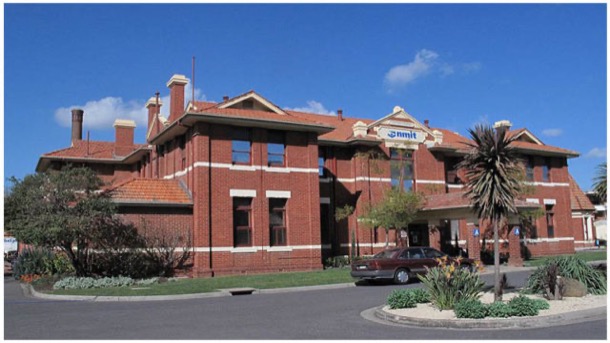
Fairfield Infectious Diseases Hospital
And then, during another long uni holiday, I worked at Montefiore (Jewish) Aged Care in St Kilda. It was perhaps 1970. Most of the Occupational Therapy “workers” there were volunteers: generally well off middle aged Jewish women doing their bit.One of those volunteers, who I remembered just as Mrs Hayman, later became Sue’s mother in law.
In my memory, the whole staff, except the doctors, were women.
In our centre, where the patients came to us, we ran activities like singalongs, bingo, games etc.
Many of our patients were post war immigrants from Europe, and some had been in Nazi concentration camps. It was the year that Melbourne emergency vehicles changed from sirens to “nee naw nee naw”, the same sound the SS vehicles had used in wartime Europe. When we heard the distant sounds approaching along St Kilda Road, we needed to be aware of some patients’ reaction.
I remember being told that that gentleman with his trousers barely held up with string, had been one of Melbourne’s top barristers. I still have the book called “Favourite Jewish Songs”, piano accompaniments I used for the singalongs I accompanied.
HOSPITALITY/TOURISM
Publican
Catherine Bourke, in her new home near Pakenham from 1844, helped with the establishment of Minton’s Creek Run, the farm in the Toomuc Valley, that they bought with another family. But in 1850, they bought the Latrobe Inn, on the main Gippsland Road, in current day Pakenham. Catherine moved out of the slab hut up the Valley, with her seven children, and became a publican. The inn became known as Bourke’s Hotel. Michael was still very involved with the family, and they had another eight children, but it was Catherine who ran the hotel.
As well as a stopping place for travellers, Bourke’s hotel was the local post office, and a hub for the community.
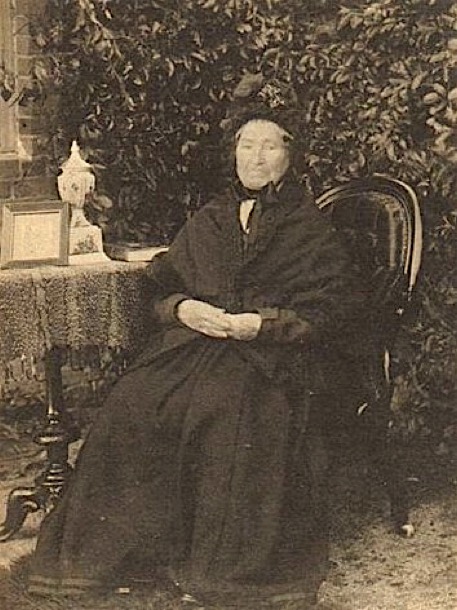
Catherine Bourke
Horse Trail Guide
Catherine’s great, great, great, great, great niece Eliza, one hundred and seventy years later, also moved to the country to start a new job in tourism. Seeking a change from office work, Eliza moved to Mansfield to work for Hidden Trails by Horseback. This company runs trails in the Victorian High Country and also at El Questro Station in the Kimberly.
In Eliza’s own words her job entailed the following:
Up at the crack of dawn. Run the horses in. Feed the ones we are working that day. Brush and saddle the horses needed for the rides.
Determine the guests riding experience, match to a horse. Sign indemnity forms, Go through basics (stop start turn etc) and then lead the ride out, float in the middle of a big group, or tail the group at the back.
We go out on four rides a day:
*AM 2 hour ride (around the station)
*Kids intro ride (around the paddock)
*1 hour loop (around a different part of the station which includes the deep moonshine creek crossing)
*PM 2 hour ride (incorporation of the 1 hour loop with a look out stop where we would take a pack horse with drinks and nibbles and tie the horses up and have a sit down)
In between those rides we feed lunch to the horses working. Then back to the stables in the afternoon, Unsaddle, wash down and tip out the horses. And then do it all again the next day. Shuffling them around in different paddocks so we could keep them all in work.
There was 40 horses total.
Long days. Great experience.
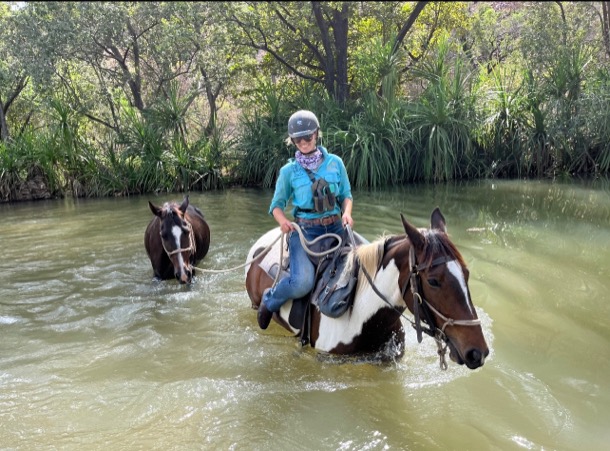
Eliza at El Questro
RELIGIOUS SERVICE
Lay Preaching and other good works
Both our mother Alice and her maternal grandmother Emma Coates (née Dau) were staunch protestants and indulged in a little lay preaching and good works.
Emma Dau, one of seventeen children, was married to Alfred Coates, who was a Wesleyan Methodist Pastor. Emma’s married life consisted of raising a family, and her duties as the Pastor’s wife. Family stories tell of her devotion to these duties and of her riding around the parish on a push bike.
At some stage in her life, when our mother was still a child, Emma also became a Home Mission Sister and was known as Sister Bessie. As a Home Mission Sister, Emma wore an impressive uniform, that is described vividly by our mother and Auntie Marge, who as children were very impressed by this formidable woman. Here they are discussing her:
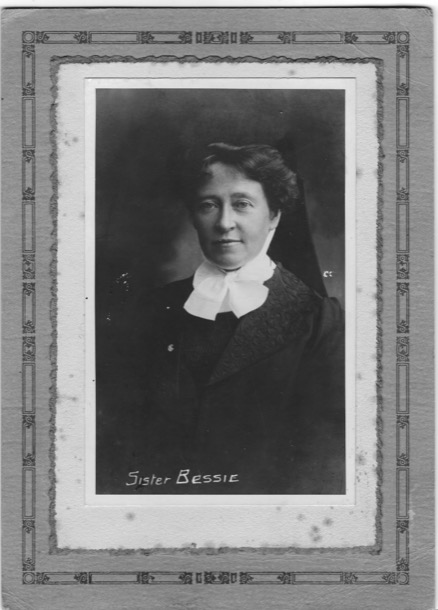
Sister Bessie
Sister Bessie worked at the Methodist Home Mission in Brunswick Street Fitzroy, in the 1920s and 30s. Sister Bessie’s work with the ‘fallen women’ and the poor, in the slums of Fitzroy was also vividly remembered by Marge and Alice. Sister Bessie’s good works involved anything from delivering babies to rescuing unmarried mothers. All of this was carried out ‘in the slums’ and in ‘poor, dirty houses’. One story has it that Sister Bessie once took off her own petticoat to give to a poor woman who did not have enough clothing.
The slums of Fitzroy were indeed slums, with a reputation for dirt, filth, disease and crime, a fearsome place. Streets were unpaved, there was no running water in many of the crowded and small weatherboard houses and children often ran barefoot.
So bad were the Fitzroy slums, that in the 1950’s they were demolished and the population was moved to the Housing Commission Towers, still standing in Brunswick Street.
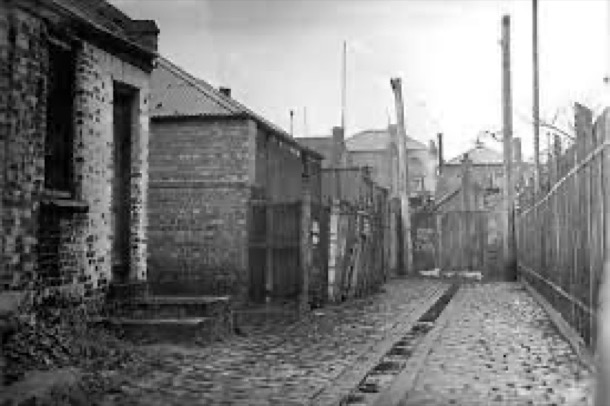
Slums in Melbourne
Sister Bessie also travelled within Victoria and Tasmania. She was lay preaching, called ‘deputation work’ and raising money for the Home Mission. Apparently she was a very good story teller and must have not only impressed her young grand daughters but also her audiences, as she regaled them with stories from ‘the slums’. So impressed was one small child, that she gave up her doll ,to be given to the poor children who had no toys.
Half a century later Alice stood in her grandmother’s shoes at the same pulpit of a small, now Uniting Church, at Jung in the Wimmera.
Alice was also doing ‘deputation work’ in a fashion, preaching about world poverty and inequality. She was also raising money for the Uniting Church’s fight against poverty. Alice mentioned that her grandmother, Sister Bessie, may also have preached here. Incredibly a member of the congregation remembered as a small child listening to Sister Bessie preaching and telling stories. She said,“She was a wonderful story teller.”
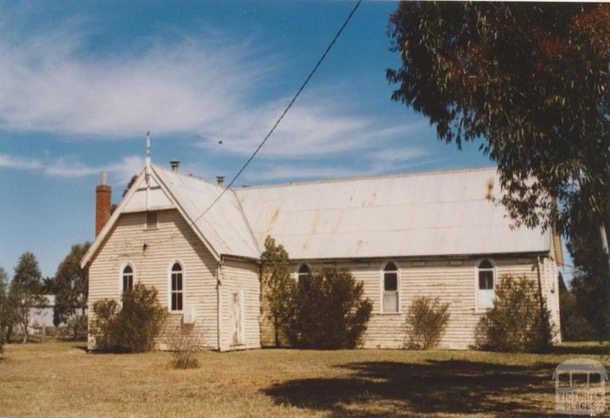
Jung Methodist Church
The Nun
We grew up with stories of a nun in the family but knew no details. With the assistance of Google, we now know that Frances Bourke, [1883-1964] Jim’s Great Aunt, joined the Presentation Sisters, probably as a young woman, and became Sister Magdalen.
Presentation Convent was founded in Windsor in 1873 ,after a request by the Parish Priest for sorely needed teaching staff at St Mary’s school.
We are intrigued about Sister Magdalen and her role. Was she a teaching Sister or did she have another role at the Windsor Convent? Did she spend her life in the Order? Watch this space, hopefully more to come.
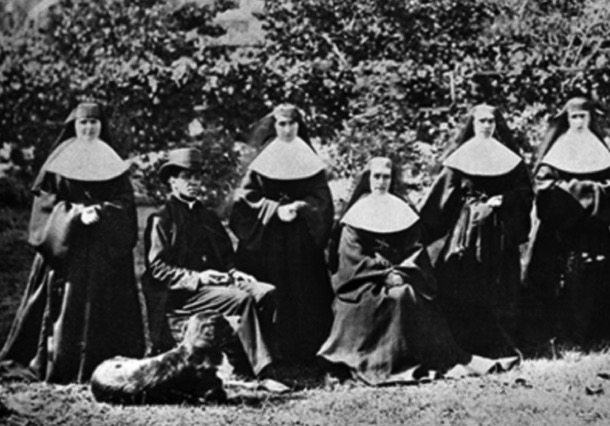
Presentation Sisters
ADMINISTRATION
Administration is part of many jobs, often the least pleasant part; writing reports, managing co workers, attending meetings, communication, ordering supplies, keeping records. These tasks are familiar to many workers.
Postmistress
In 1859 Bourke’s Hotel in Pakenham also became the community post office, ten years after Michael had bought the license. He became the founding post master of Pakenham. After his death, in 1877, Catherine became the Pakenham postmistress.
Up until 1901, each of the colonies operated their own postal service. After Federation, they all merged to become the Postmaster Generals Department (PMG).
Cecelia,(Cissy), Catherine’s youngest child, who never married, continued the role after Catherine’s death in 1910.
The job of postmistress would have involved taking sacks of mail to and from the Cobb and Co coach, later the train, and sorting it for people, who would come in to collect their mail.
Over time, the job of post mistress also included a savings’ bank, money order office and telegraph station; quite an important role in the local community.
Sales Administration Supervisor
But for a proper administration job, Tessa is our woman. Her job at Kenworth Trucks is to project manage the outfitting of each truck. She manages a team of people who put 22 trucks per day together, to the specifications of each customer. Keeping all the balls in the air, making sure everyone is gainfully employed, smoothing relationships with customers and between workers, maintaining records, supervising departments. It’s a very large and stressful job.
Office Administrator
Another organised young woman is Eliza who has also worked in office administration, at Nautilus Training and Curriculum, the company founded by her dad, Ian.
THE ARTS/CRAFT/DRAFTING
Whitework, Semco and Dressmaking
Three of our women worked in the textile industry, a generation apart. Both Great Aunts Bert and Beat and our Auntie Marge were involved in the embellishment of textiles with embroidery, and in dressmaking.
In our post on Auntie Bert, ‘A Sterling Character’, in March 2019 we explored ‘Whitework’. Whitework embroidery is the general term for hand embroidery worked with white thread on white fabric. It was used on many household items from babies’ bibs and tea towels to under clothes. Bert and Beat who, as young women, worked in this industry, probably worked in Flinders Lane. At this time it was the centre of the “rag trade”.
Auntie Bert, being unmarried, needed to continue in the workforce, but also be available to help her elderly parents with whom she lived. A talented and resourceful woman, she started a dressmaking business, working from home. Although self taught, her reputation for fine tailoring and expertly fitted ladies’ wear soon spread amongst the ladies of Camberwell and Surrey Hills. As her clientele increased and business grew, she had to move to bigger premises, and Bert leased space for a workroom and office in Riversdale Road Camberwell. This business is also described in our post ‘ A Sterling Character”
Drafting and Drawing Office
Our Auntie Marge worked in a number of drafting and drawing offices during her working life. After her short stint teaching, Marge began work in a drawing office in Collins Street, and then, during the war, moved to the drawing office at Maribyrnong Munitions Factory where Alice also worked. In 1941 Marge moved again, this time to the drawing office at ICI.
Later in life, Marge used her artistic talents at Semco, designing patterns for embroidery transfers. The designs were created as line drawings and printed onto tissue paper transfers, to be sold to women to embroider for items for the home, or as gifts. The transfers were ironed onto cloth after which the item could be embroidered accurately following the design. Margaret and I can remember embarking on an Semco embroidery project that I don’t think we finished.
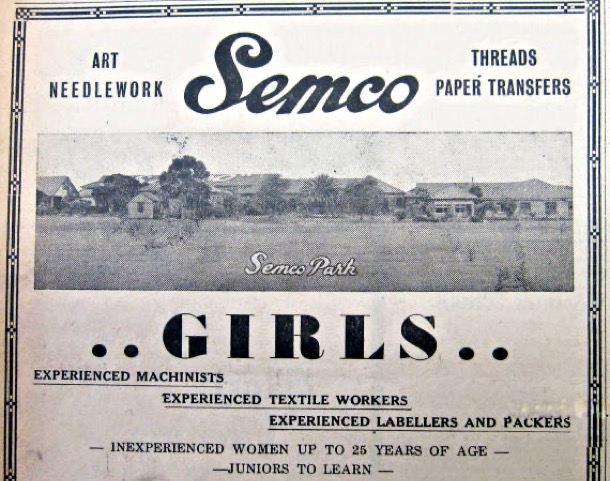
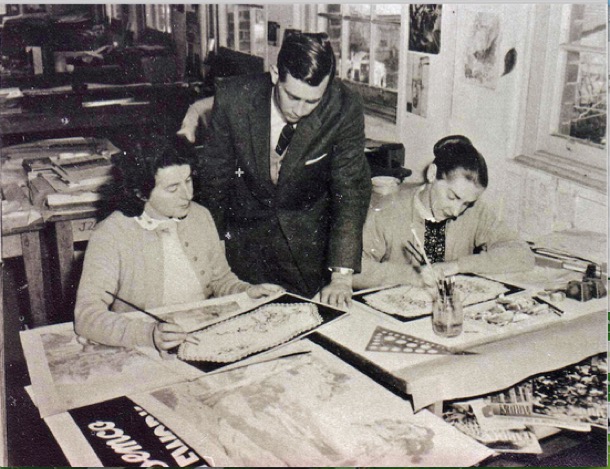
Semco Workroom
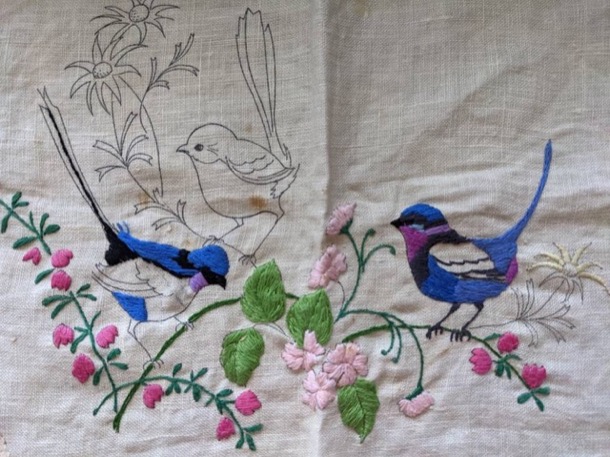
Typical Semco Embroidery
Designs subjects were flowers and animals, both European and Australian, cute houses, toys and even landscape scenes. Amongst the many items destined for embroidery were doilies, tablecloths and serviettes, tray cloths ,handkerchiefs, babies’ outfits and children’s clothing.
Margaret and I can also remember visiting Auntie Marge at Black Rock and seeing her designs on a big drawing board. A working mother was a novelty for us, as our mother did not work outside the home.
The Semco factory and workshops located in Semco Park, Black Rock, was quite a progressive company and treated its employees well. They paid award wages to women, and provided recreation facilities for the staff, including six and a half acres of garden and lawn for their enjoyment. It was a large employer, as not only were the designs created and printed, but the embroidery cottons were also spun and dyed.
Marge worked for Semco as a part time employee, and at the same time studied Interior Design at RMIT. Both were unusual. For many women of her era, part time work outside the home was difficult to find, even once children were at school. Marge was fortunate to have Semco in her area and for it to be accessible on public transport. This allowed her to work there for many years, while pursuing her life long interest in further study.
Drafting, Drawing and Card production
Marge worked in a number of drafting and drawing offices during her working life. After her short stint teaching, Marge began work in a drawing office in Collins Street and then, during the war, moved to the drawing office at Maribyrnong Munitions Factory where Alice also worked. In 1941 Marge moved again, this time to the drawing office at ICI.
In between jobs outside the home Marge, like her Aunt Bert, started a business from home. Using her artistic skills and her design experience at Semco, Marge launched a greeting card business. She designed and screen printed the cards, packaged them and sold them to shops specialising in handmade original work.
Art and Craft Activities for At Risk Children
From this heading, it is obvious that this position could be fraught with difficulties. As a nineteen year old I was blissfully unaware of the worlds these children came from. Orana was a Uniting Church children’s home for at risk children and ‘orphans’. I remember mostly a group of cardigan and jumper clad children in skirts and shorts, traipsing into a linoleum floored space to participate in whatever I decided to do. I don’t remember anyone checking the activities, or that I had to run them past any of the staff. Some of the activities were very, very messy, but the children willingly helped me clean up. The confronting and difficult part of this job was not the behaviour of the children, but the heavy prevailing air of sadness in that place.
Set Design and Construction
Lois learnt woodworking from her dad. Together with her design and craft skills, she developed her “Top Props” business, designing and creating stage props. For instance, Deirdre’s Tappers’ concerts would not have been the amazing spectacle they were, without Lois’s colourful props.
An Artist in the Hills
Through her meticulous fine drawings and paintings Katherine explores a fantasy world inhabited by little creatures and characters, who are at home with spiderwebs and toadstools or nestled under gnarled old trees . Working from her house and studio in the Dandenongs, she is pursuing her interest in children’s book illustration.
RETAIL
Grocer
Our Great Aunt, our grandmother’s sister, Beatrice Morris (nee: Holm) owned a grocer’s shop in Maling Road, Canterbury, for a number of years. Bill Morris had previously worked at Lawson’s Grocer in Middle Camberwell , so having experience, this was a logical move. We are not sure how long they were in Maling Road but presumably Auntie Beat helped in the shop as well as raising a family of three boys. It must have been reasonably profitable, as during this time they built a house in Balwyn, and then sold the business to buy the farm, Sefton Park.
“Checkout Chick”
Anna, Beatrice’s great, great niece, is the only other woman in the family who has worked in retail, and this too was in grocery shop: the Renaissance Supermarket, Hawthorn, in the 1990’s: it was a supermarket of course. At sixteen Anna was keen to have a part time job and earn her own money. Her position was ‘checkout chick’, working on the register, before scanning of prices using barcodes was all entirely automatic. For instance, the checkout chicks had to memorise the PLU code for all the individual fruit and vegetable items, and this had to be entered on the register, manually.
SCIENCE
Laboratory Work
After the horrific use of chemical warfare (gas), on the European battlefields during the 1914-18 war, many countries began to work on ways to protect their populations from gas warfare.
Australia began its own “Chemical Defence” research program in 1926 at the Munitions Supply Laboratories, in conjunction with Melbourne Uni. They developed and assembled “respirators”.
By the time the second world war began in 1939, scientists were well advanced in this work. In 1940, over half a million respirators were manufactured at Maribyrnong Munitions Factory, and more than 500 people were employed there.
Our mother, Alice worked there, in the microscope section, testing the penetration of gas that came through the filters. When she would describe this work, she would indicate tapping and counting as she stared down the microscope. She had studied Year 11 Chemistry the year before she started.
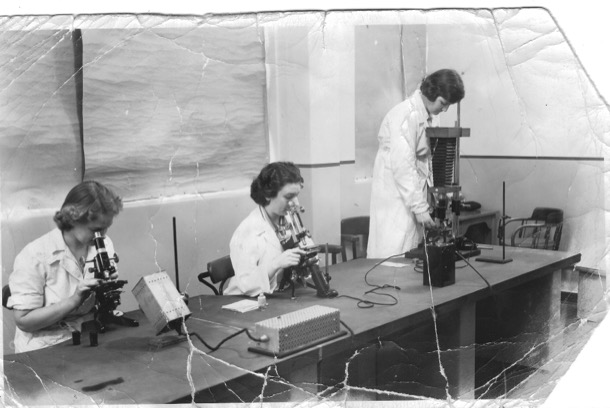
Alice, left, working at Maribrynong
EDUCATION
Teachers
At least five of the women, in four generations of our family, have been teachers, some primary, some secondary.
The earliest we know of is our Nana, Alfreda, who taught primary school, before marrying Alfred in 1916.
She had fought for a chance to continue her education after secondary school. There was not enough money for university, and so she went to Melbourne Continuation School, which later became Melbourne High School. Its focus was teacher training and thus, after two years, Alfreda became a teacher. Presumably she taught for about four years. Women had to resign from teaching when they married.
Our Auntie Marge, Alfreda’s eldest daughter worked as a teacher for a year, straight from school. She taught 50 five year olds at Balwyn North, as a “junior teacher’. She also went to RMIT three nights a week dong Fine Art, her real passion. She only lasted one year, having decided that she was not suited to teaching. Our mother, Alice, while not actually teaching, worked as a school librarian assistant for the last years leading up to her retirement.
The next generation is ours, and at least four of us worked as secondary teachers: Pauline for a few years, and Sue, Anne and I until our retirements. All three of us did our initial tertiary education, including teacher training, on “Studentships”, which provided free education and a small wage, in return for three years service, usually in the country. Sue went to Sale, Pauline to Portland, and Margaret to Moe. Sue and and I wrote about our first year teaching experiences in a post on October 28, 2015, filed under “Young Adults 1970s”
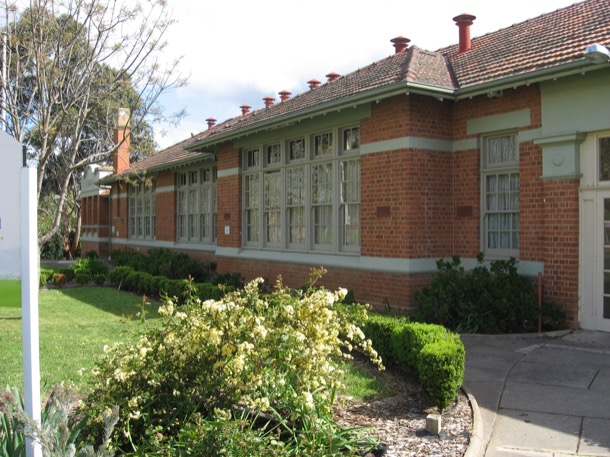
Sale High School
Of our own daughters and nieces, only Anna has taken on the mantle of teaching. She even completed most of a PHD in Education. Recently, in her mid forties, she has gone back to the English classroom in a secondary school, where she is thriving!
Such a lot of different job experiences, and yet, within relatively narrow parameters. No astronauts, truck drivers or plumbers.
And, it must be stressed, the most important job for almost all these women, over six generations and nearly a century, is that of parent and homemaker.
Corona Virus - an annotated vocabulary
27 04 22 14:35
“Where were you when the world changed?” we wrote, a year ago, under the heading “The Year of Covid”.
The world did indeed change, and the “year of Covid” is entering its third year. Turns out, Global pandemics don’t magically melt away, even when we triple vaccinate the wealthy nations.
So Sue and I are taking a new approach to our documentation of this chapter of our lives. Extended periods of shared experiences tend to generate their own vocabulary.
Here then is our annotated vocabulary of the Covid-19 pandemic in Victoria, Australia.
5/10 km limit
During Melbourne lockdowns 5 and 10 kilometre limits were introduced to reduce mobility and therefore the spread of the virus. Online tools were published to allow people to work out their permitted radius and movement from their home address.
Active cases
People with Covid who are still infectious.
Aerosol Transmission
Refers to the transmission of the virus by small liquid droplets carried in the air, in a cloud. Governments around the world and even the WHO were slow to accept expert opinion that Covid 19 was primarily spread by airborne transmission, as this had expensive ramifications for attempts to control spread of the virus.
Anti Masker
This refers to people who refused to wear masks. They saw it as an infringement of their personal freedom and often part of a bigger conspiracy by the State to wrest control from individuals. Exemptions for health reasons were available from GPs but only for a very limited range of conditions. Fines were imposed for non mask wearing.
Armchair Epidemiologist
There has been no shortage of ‘experts’ who have no expertise, experience or training, offering up their pearls of wisdom to anyone who will listen.
AstraZeneca (AZ)
The AstraZeneca vaccine was developed in the UK by an Oxford research team in 2020. It uses a weakened animal virus , chimpanzee adenovirus, called a viral vector, that contains the genetic code for the spike protein. Once it enters the body, it tells the cells to make copies of the spike protein. The immune cells recognise the spike protein as a threat and begin building a response to it.
AstraZeneca has been a very successful and useful vaccine, despite the bad press it received, due to a rare clotting side effect. Immunity does wane over time but it still protects from severe disease.
ATAGI
The Australian Technical Group on Immunisation is a Federal Government body that provides expert advice and recommendations to the Health Minister and the TGA (Therapeutic Goods Administration. ATAGI, probably not a household word pre pandemic, was now spilling from the mouths of politicians and very much in the public eye. Their role in determining which vaccines were safe was now of vital interest to young and old.
Booster
The vaccines we are currently using in Australia, all need a third dose, and even fourth, to avoid failing effectiveness over time. This has become known as being boosted.
Border Bubble
States with differing levels of infection have closed their borders to each other at different times. Border communities that share facilities have been allowed to cross State borders within a defined area called a Border Bubble.
Border Checkpoint
Police and Defence Force personnel checked people’s passes during times of Border closure. Lines of cars and trucks and ad hoc overnight camping spots, became the norm.
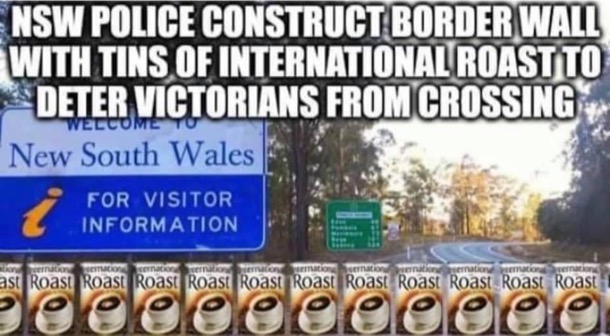
Bubble buddy
During the long second wave lockdown, the mental health of people who lived alone became a concern. To ease the isolation, people were allowed to nominate a bubble buddy, with whom they could spend time, albeit within strict guidelines. When this began to include life partners who lived in different houses, the Premier tied himself in hilarious verbal knots trying to explain the rules.
Casual Contact
Strangers who have the possibility of infecting each other, just by being in the same place, at the same time.
Check in
The technology of QR codes became the solution for knowing who could have been infected in a particular time and place. “Checking in”, using a government developed app on one’s smart phone, became an act of community minded altruism, and, later, a quick way of demonstrating one’s vaccination status.
Chief Health Officer
Professor Brett Sutton has been Victoria’s Chief Health Officer since March 2019. By the time he had appeared at a few Covid Press Conferences, he became very well known to Victorians. Quite quickly, the title became shortened to the “CHO”. CHOs of other states were also very public figures.
In Victoria, from the beginning of the pandemic until later 2021, when the powers were curtailed, the CHO had the legal power to order all sorts of restrictions.
CHOttie
Brett Sutton is an attractive man. He generated a lot of swooning, a lot of memes, a Facebook fan club and even some ‘merch’.
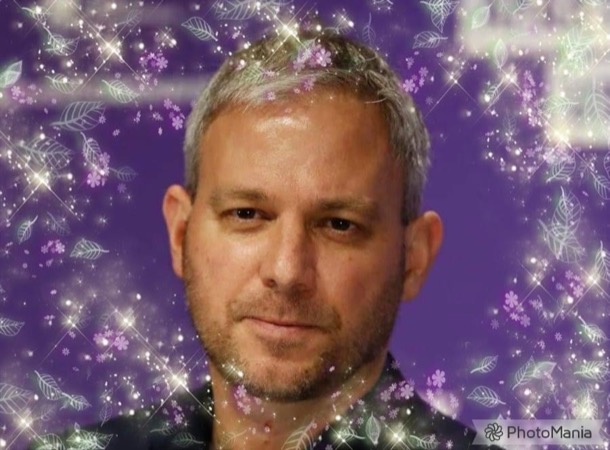

Click and Collect
Business and customers adapted quickly to commerce during a pandemic. After ordering on line, shoppers could choose home delivery, or the new “click and collect”, where their purchases were waiting for them at the front desk, or even put straight into their car boot.
Close contact
People designated ‘close contacts’ of a ‘case’ were required to self isolate for a set period of time. What it took to be a close contact, and how long they needed to isolate, varied between States, and changed over time.
Cluster
In major towns and cities, groups of cases tend to develop in particular areas. Epidemiologists call these ‘clusters’, which, along with a lot of other specialist words, became part of the common vernacular. Thus, in Victoria, there was the Shepparton cluster, the Black Rock cluster etc.
Community Transmission
While States of Australia were trying to eradicate the virus, there was a distinction drawn between people who caught the virus overseas, interstate, or whilst in quarantine, and those who caught it out in the community.
Contact Tracers
An army of specially trained communicators interviewed, often multiple times, people who had caught covid, to trace their movements and alert possible contacts. The development of QR codes and “checking in’ made this role less critical.
Contactless Delivery
A selling point for some businesses, was the ability to home deliver goods that had been purchased on line, without entering houses or being face to face with people. This became known as ‘contactless delivery’.
Coronacast
Dr Norman Swan, long term Medical Journalist with the ABC, began a daily podcast he called “Coronacast” during the first weeks of the pandemic. In it he answered questions, explained medical terminology, and provided commentary on the pandemic. It became essential daily listening.
Coronavirus
Sars stands for Severe Acute Respiratory Syndrome. Sars-Cov-2 is the virus that causes the disease Covid-19. The ‘corona’ refers to the halo of spike proteins that surrounds the virus.
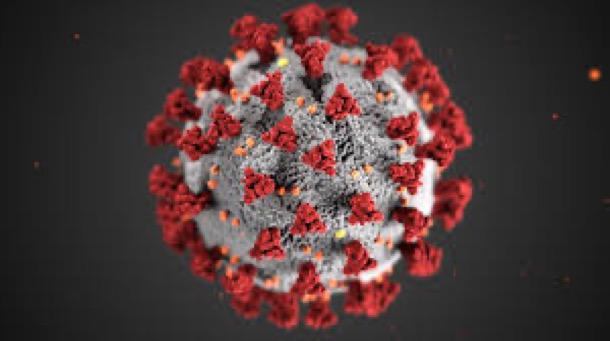
Covid Response Commander
Jeroen Weimar had transformed Melbourne’s public transport system, as its Chief Executive. As the ‘test and trace’ processes in Victoria struggled during its first wave, Premier Dan Andrews turned to this no nonsense logistics expert. Jeroen brought ten of his trusted colleagues from Public Transport and fixed Victoria’s Covid Response processes. He became a popular public figure by fronting many press conferences and answering questions in his rapid fire, no nonsense style.
Covid Normal
Always just around the corner, and, so far, always stymied by yet another new variant, a “Covid Normal” life is the precursor to “living with the virus”. It meant not being officially locked down, but having some legal restrictions on normal life.
Covidiot
Those who behave idiotically during the pandemic, especially flouting the restrictions. The term was largely replaced by “antivaxxer”, once the vaccines were available.
Curfew
At the height of its fight to reach Covid Zero, in order to help police restrictions, and limit movement, the Victorian government imposed a 9pm curfew on all but essential workers. Other parts of the world had used this measure successfully. It made Melbourne a very, very quiet place.
Dan-stans
The “stans” are the countries of Central Asia that were mostly part of the Soviet Union, and remained under Russian influence after independence. Using the term with Dan in front of it links Victoria, under Premier Dan Andrews, with these near dictatorships. It suggests that Victoria is a dictatorship. “Dictator Dan” became a term of abuse levelled at the Premier during pandemic lockdowns.
Deep Cleaning
Early on in the pandemic, it was thought that, like colds and flu, the Covid virus was transmitted through droplets, which could settle in a room and remain a source of contagion for days. When transmission had occurred in a venue it was ‘deep cleaned’ to remove any traces of virus.
Diamond Princess
This cruise ship was the source of Australia’s first wave of infections. Passengers were allowed to disembark at Sydney, and travel on to all parts of Australia, taking the virus with them. There were questions about who made this decision, and an inquiry was held. Cruise ships, with their closely quartered populations, and inadequate air flow, turn out to be perfect breeding grounds for this virus.
Doomscrolling
The 2020 Macquarie Dictionary word of the year, Doomscrolling refers to the practice of continuing to read news feeds online, even though it is depressing, and endlessly negative.
Donut Day, Double Donuts (put on emojis)
During the early waves of the pandemic, in Victoria, we watched with interest, the daily infection numbers. For a long time, the first place go find them out was the daily Press Conference. And then, magically, they began to be a lower number each day. We waited for the magic zero cases. When it happened, it came known as donut day. Cafes across Melbourne sold out of donuts. and no new cases, no new deaths became a "double donut day”.
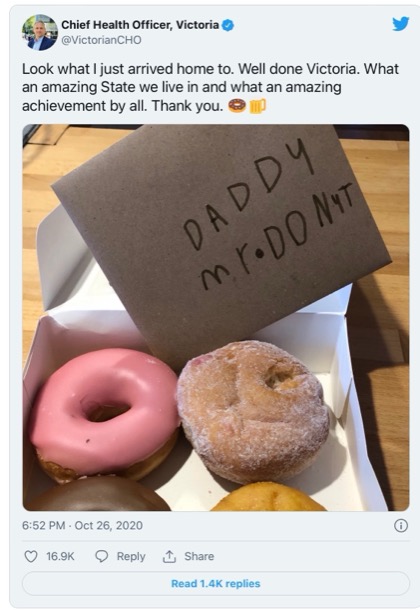
Double Vaxxed/Triple Vaxxed/Fully Vaxxed
Having had two, and later three vaccination doses, which allowed people to access some elements of the community, closed to the unvaccinated. eg “I’m fully vaxxed”, cited as a badge of honour in some circles.
Effective Reproduction Number
The Basic Reproduction Number (R) refers to the transmission potential of a virus in a population with no immunity. It is used in the calculation of the Effective Reproduction Number (Reff ) The Reff refers to the average number of secondary cases per infectious case in the current population, where there will be some immunity. This is a more complicated calculation, but is important as it tells the Health Department, in real time, how many people are likely to be infected by each positive case of Covid-19. When the number is high, the virus spreads faster. If the Reff is 1, case numbers will remain stable and if it is less than 1, the case numbers will drop.This is important information that assists Government in planning a response to any infectious disease outbreak, not just Covid-19.
Epidemiology
Epidemiology is the scientific study and analysis of the distribution patterns of a disease ( how when and where). World wide epidemiologists have been an integral part of the fight against the Covid 19 Pandemic. Using data and analysis, they have informed and advised governments, influenced policy and made recommendations on preventative measures.
The term Epidemiology of the Day also entered the lexicon at the daily Victorian press conferences, during the first and second waves. It referred to the distribution and case numbers and then morphed to include hospitalisations and eventually vaccination rates.
Essential Workers
Essential workers are those deemed by the government to be vital for the continued safety and care of the population. It included workers involved in food production, processing and distribution, and workers required to keep
supply chains functioning. It also included anyone involved in healthcare, from the hospital administration and doctors and nurses, to the cleaners and orderlies. The role of truck drivers was also appreciated and they received toots and waves from a grateful population at the height of the first wave, as the importance of their role became obvious.
Exposure site
Exposure site refers to any site, other than a private dwelling, where there has been infections reported. It could include work places, schools, public transport, shops etc.
Flatten the Curve
We became very used to looking at graphs of infection rates, especially during the early stages of the various waves of infection. During periods of exponential growth the graph headed skywards in an almost vertical line. Each day we looked anxiously for signs of a more gradual increase in the number of cases. This created a flatter curve, as the graph eventually headed down.
Fleeting contact/transmission
This term refers to fleeting non physical contact that can result in transmission of the virus. The term became an issue during the Delta wave as the virus had become more transmissible but it was difficult to validate. The conservative press and Opposition were keen to use it as a political football in order to discredit the CHO and Victorian Government’s handling of the crisis.
Flexible working
During the pandemic one of the health orders imposed to limit movement and contact was, ‘if you can work from home you must work from home’. Despite some unfortunate consequences, such as social isolation and difficulties for working parents also coping with home schooling, working from home was popular. Long term changes in how, where and when work is done are emerging, as flexible working is embraced. In the future, fewer hours will be spent in the office and more meetings and conferences will be on Zoom. The ramifications are already evident in empty CBD office towers, less traffic at peak hour, fewer interstate flights, and in an outer suburb, country and coastal real estate boom. People are realising they do not need to live close to work.
Freedom Day
Freedom Day was a term coined by UK Prime Minister Boris Johnson. Monday, July 19th 2021, was the day Boris invited citizens to ‘take back their freedoms’. It was the end of laws mandating wearing of masks and enforcement of social distancing. All businesses re-opened, including nightclubs and at midnight parties erupted all over the country and many partied all night.
Fully Vaxxed
Fully vaxxed refers to what is deemed at the time, to be the optimum dosage of Covid vaccine. At first it was two doses, but as more real life data emerges as well as new very transmissible variants, three doses is becoming the recommended dose, as it is in Victoria now.
Genomic Sequencing
This term is not specific to the pandemic of course, but we grew to learn all about it, as different variants of the virus began to appear. It does, of course, refer to the scientific process whereby the genetic makeup of a living thing can be determined. During the pandemic it has been the means of charting the major and minor genetic changes to the virus.
Get on the beers
When restrictions came into force, and people were getting used to the restricted life, an illegal dinner party was discussed at the daily press conference. Premier Dan Andrews admonished people for having mates around for drinking parties. His words were made into hilarious remix by a Brisbane duo, Mashd N Kutcher, which became one of 2020’s hottest 100 hits.
Being able to finally get on the beers, became a special Victorian celebratory phrase.on the first donut day, although Dan did say at his press conference that day, that he “might be going a bit higher up the shelf”.
https://www.youtube.com/watch?v=7hOK5JF5XGA
Hard Border
In a pre pandemic world, defence forces manning border outposts at state borders seemed impossible. We grew used to it. long lines of vehicles at the Murray River bridge, Border passes, exemptions, police number plate checks were all part of our ‘hard borders’. In 2020, we even had hard borders separating the Melbourne metropolitan area from regional Victoria.
Health Care Workers (HCW)
Of course we had nurses, doctors, ambulance drivers (‘ambos&rsquo etc before the pandemic, but, suddenly their work became the coal face. There was world wide focus on hospitals. During the first wave, as cases mounted, it became customary in many cities around the world to come outside at a set time, on balconies and streets, and bang pots and pans in recognition of their work, and to applaud new shifts on their way into the hospital. These ones are in Madrid:
etc before the pandemic, but, suddenly their work became the coal face. There was world wide focus on hospitals. During the first wave, as cases mounted, it became customary in many cities around the world to come outside at a set time, on balconies and streets, and bang pots and pans in recognition of their work, and to applaud new shifts on their way into the hospital. These ones are in Madrid:
https://www.youtube.com/watch?v=5MIjynl6nYc
Herd Immunity
This is a term long used in epidemiology. It’s how most vaccines usually work. Enough of the population have antibodies protecting them from a disease, to protect the vulnerable: the young, the old and the immunocompromised. There is some evidence now that this may remain an epidemic disease where we never actually reach herd immunity, but have waves of infection, and variants remain a constant threat.
Home/Hotel Quarantine
People in quarantine isolate either at home, or at a “quarantine hotel”, which were repurposed, empty city hotels. Early on in the pandemic, people coming into the country had to quarantine for fourteen days at a special hotel. Victoria’s “first wave” happened because of a leak from a quarantine hotel. It was a huge scandal, and became very political.
Hotspot
An area where there was a lot of Covid was known as a “hotspot”. It could be as small as a shopping centre and as large as a group of suburbs. They were publicised so that people could be alert to symptoms, if had they been nearby, and keep away from them in future.
Household Contact
The most likely place people might catch Covid is from people they live with. If you had a “positive” member of your household, you automatically became a "household contact”, and thus had to be tested, and isolate for a set period of time.
Howard Springs
This area of Darwin had been an army base. It has many stand alone little huts, perfect for keeping a lot of people separated from each other, and from the general public. It has been used extensively for people coming from overseas, and it became the model for other new quarantine centres.
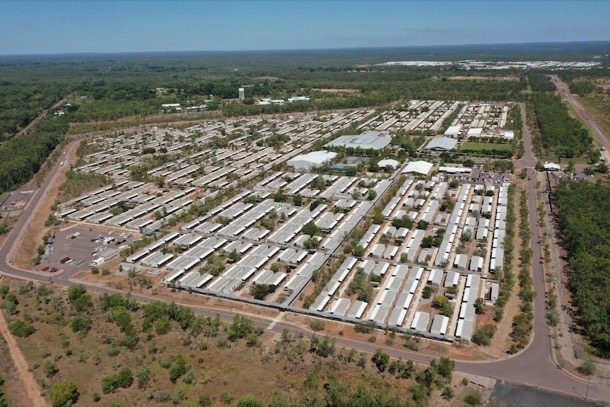
Hydroxychloroquine
This was an older longstanding treatment for malaria. In early 2020 it was trialed, unsuccessfully as a treatment for Covid 19. The reporting around its use was unskilful and it became politicised especially in Trump’s America. Hydroxychloroquine slipped into the revamped culture wars and their conspiracy theories, where it remains to this day.
ICU
This stands for Intensive Care Unit. The number of patients in hospital, in ICU and on a ventilator has become a measure of how problematic a covid wave is.
Index Case
This is an epidemiological term. An outbreak in a given area begins somewhere. Extensive contact tracing enables outbreaks to be traced back to the first person to catch it. This is the “index case”. It became a political blame game to find the index case and what led to their catching it.
Infectious period
A medical and epidemiological term. It refers to the days during which a case can pass the virus on to others.
Intimate Partner
During Lockdown, the plight of partners (friends with benefits) who do not live together needed to be dealt with. It became grounds for home visits, that were otherwise disallowed. A hilarious Press Conference where Premier Dan Andrews explained the rules, led to his reflection that he never considered that this conversation would be part of his job.
Intubated/Ventilated
The really horrible truth about severe Covid is that people are treated by having a machine breath for them. They have to be sedated for this and usually lie on their fronts. The tube down into their lungs often caused lasting damage to their throat or vocal folds. A daily number of people in each State in this situation has been reported as a measure of the severity of an outbreak.
Iso
There is a particularly Australian propensity for shortening and lengthening familiar words and names. Thus “isolation” becomes “iso”, as in “He’s in iso at home”.
It’s Not a Race
Prime Minister Scott Morrison did not order enough vaccines, nor did he have a usable plan for mass vaccination. He excused his inadequacy with this oft repeated phrase “It’s not a race, it’s not a competition”. It came back to haunt him when the Delta wave hit, and there was a rush to get vaccinated. Especially when it became clear that he had favoured NSW with vaccines and vaccination places, over the other States.
Ivermectin
Ivermectin is a veterinary worming medicine given to horses. Its use against Covid began in South Africa and many third world countries, in spite of evidence that it is not effective. Once the FDA in America and ATAGI in Australia warned against its use, it became adopted, like Hydroxychloroquine before it, as the darling of right wing conspirators.
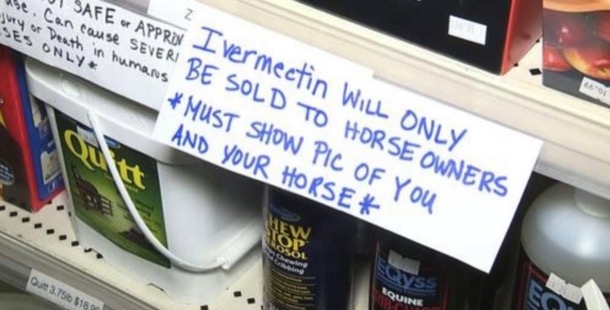
Jab, jabbed, double jabbed, triple jabbed
Shorthand for having had the vaccine. Interchangeable with “vaxxed”.
Job Keeper, Job Seeker
During the first Lockdown, when so many people lost their jobs, or had much reduced hours, government assistance was provided. Job Keeper was given via employers which maintained employer/employee relationships, so that, when the economy “bounced back”, those jobs were still there.
Job Seeker replaced unemployment benefits for a while. The requirements to work as a volunteer, or apply for a set number of jobs per week, were dropped.
Karen
Wikipedia says “Karen is a pejorative term for a white woman perceived as entitled or demanding what is above the scope of what is normal”. Its use grew during the early months of the pandemic. In Victoria, it first came to general attention with a woman from Brighton, a wealthy suburb, complaining about being confined to the five kilometre limit because she had already walked around all the streets of Brighton. The label grew with a woman refusing to wear a mask in a Bunnings store and filmed arguing with a hapless employee.
Let it Rip
This has become synonymous with a government policy of not having any restrictions on movement, gathering, mask wearing etc. The sentiment presupposes that a particular population will eventually acquire herd immunity through most people becoming infected with the virus.
LGAs of Concern
This term is part of Sydney’s Covid history. During their Delta wave, the least wealthy Local Government Areas had the most infections. The kind of jobs people in those areas had couldn’t be done at home, and poverty made continuing to work essential. The LGAs of Concern suffered more Police patrols, curfews and greater lockdowns than the rest of Sydney.
Locally-acquired cases
In the beginning of the pandemic in Australia, the only source of infection were visitors from overseas. Eventually there was “community transmission”, people in the community catching it from other people in the community. These became known as “locally acquired cases”.
Lockdown
We first saw legally enforced stay at home orders in our News bulletins, when people in the Chinese city of Wuhan, where the virus was first discovered, had their doors welded shut to keep them in. This was followed quite soon with footage of deserted Italian cities, and people forced to stay inside their homes. Little did we know! We are completely acclimatised to “lockdown” now, even though it has become very politicised, and may never be used in Australia again.
Lockdown Light (Lite)
This term grew out of the rivalry between Victoria and NSW. The NSW government did not introduce the strict lockdowns we saw here in Victoria. Their limited restrictions were contemptuously ridiculed.
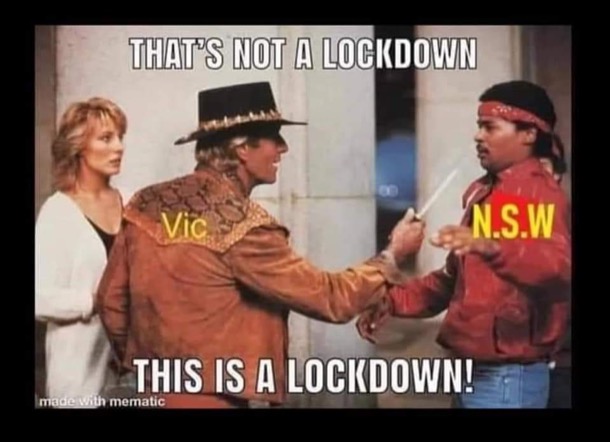
Lockout
After vaccinations became widespread, and eventually compulsory in certain industries, only those who were fully vaccinated could participate fully in the opened up economy. These were known as vaccine mandates. The Premier’s message became, “We’re not going to “lockdown” the economy, we’re going to “lockout” those who refuse to get vaccinated.”
Long Covid
Over time it became obvious that a sizeable proportion of those who had even mild disease, still had symptoms long after the acute phase had passed. “Brain fog”, fatigue, and a range of other symptoms last months and even years. This has become known as “long Covid”.
N95
An N95 mask is a mask that has 3 layers and fits securely around the face. If properly fitted, it filters 95% of airborne particles. During the Omicron outbreak they became widely available to the public as this variant was so transmissible. N95 masks are also worn by frontline workers and, in this scenario, have to be specially expertly fitted.
National Cabinet
National Cabinet was established in March 2020 in response to the pandemic and has replaced COAG for the duration of the crisis. It has been composed of the State Premiers, the Chief Ministers and Prime Minister. Initially, National Cabinet was able to work collaboratively on crisis management, but unfortunately, politics and individual agendas have since made the group less effective and able to make good decisions.
Negative Result
Negative result became the term we all wanted to hear after a PCR or RAT test. It became shorthand for, “I don’t have COVID”.
New Normal
Towards the end of 2020 and Victoria’s first big wave the Premier Daniel Andrews, began to talk of opening up at Christmas. He warned the life would not return to normal, but that it would be a “Covid normal”. This term morphed into “new normal” and was widely used.
North Face
During Victoria’s longest and strictest lockdown in 2020 Premier Danial Andrews held daily Press conferences where he often wore his North Face jacket. Our lives had shrunk so much and the daily press conference was such a feature of our day, that the appearance of the North Face jacket prompted much hilarious activity on Twitter and, in the Press, speculation on its symbolism.
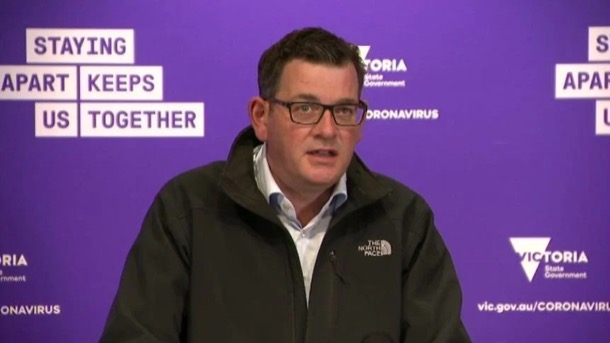
Online Learning
During the lockdowns when schools were closed, remote learning of course meant on line learning. There was great discrepancy, mostly socio economic based, between different schools. Many teachers worked very hard to not only teach content, but also to help their students cope with the isolation. The Victorian Government provided IPads to disadvantaged children, in an attempt to level the playing field. Inevitably, some children emerged with gaps in their learning, that was addressed by employing extra tutors.
Pandemic
A pandemic is a disease that is prevalent world wide, rather than an epidemic that is restricted to a region or one area.
PCR Test
PCR means polymerase chain reaction. It is a test to detect genetic material from a specific organism, such as the SARS-CoV-2 virus. PCR testing stations were established and run by State Governments. As such large numbers of tests were required drive through testing stations appeared in many suburbs and during the height of the waves long queues of cars were very evident.
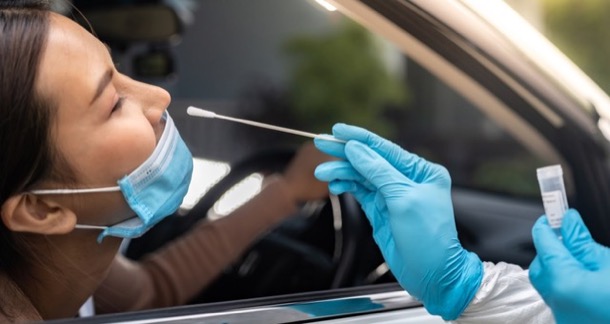
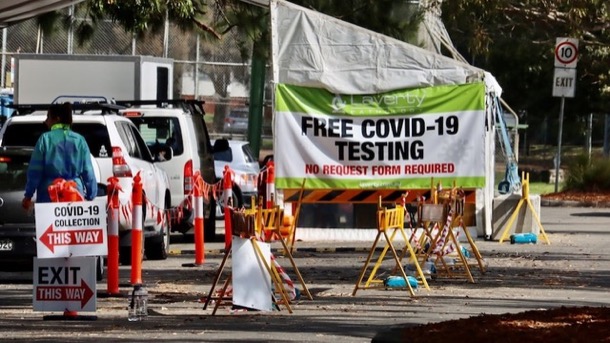
Pfizer
Pfizer is a world wide pharmaceutical company. Pfizer was amongst a number of companies who used RNA technology in the Covid vaccine.This technology uses a piece of genetic code of the virus to give instructions to cells in the body to make antigens and trigger an immune response. The advantage of this technology in vaccine manufacture, is that it can be easily adapted for changes in the Covid virus or indeed for other viruses that may emerge. In real world use, it has proven to also protect against severe disease.
PPE
PPE refers to the personal protective equipment usually associated with operating theatres. During the pandemic it was worn by anyone on the front line, in contact with infected people. N 95 masks, face shields, surgical gloves and plastic gowns were now commonplace.
Presser
This is shorthand for Press Conference. The Victorian Premier Daniel Andrews and his daily Presser, during Victoria’s waves of infection, became an essential part of our lives during lockdown. These Press Conferences differed from the norm as they were important information sessions using the experts involved in decision making, including of course the Chief Health Officer.. Another new aspect was the extent of the audience. The daily presser for us, was a shared experience with much communication by text.
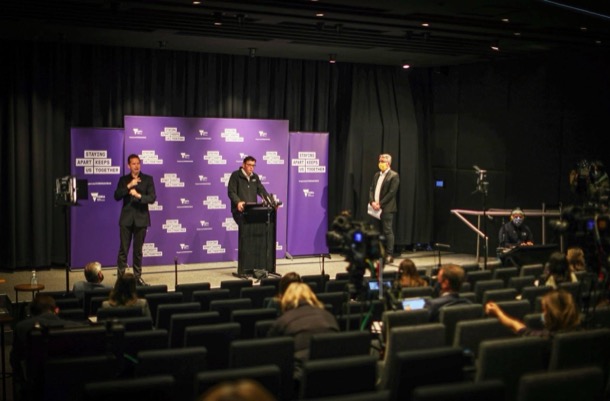
Public Health Orders
These are legally enforceable orders made by the CHO and signed by the Premier. They included items such as mandatory mask wearing, density limits and curfews.
QR Code
QR stands for Quick Response Code and consists of a black pattern of squares on a white background that can be read by a camera. It was used during the pandemic to track people to facilitate tracing and the TTIQ strategy. It was also used to check vaccination status that was required for access to some venues, for instance inside dining and non essential retail.

RATS
Rapid Antigen Tests (Rats) are what Australians call Lateral Flow tests. The acronym has slipped so quickly into our vocabulary, that we hardly stop to think what the letters stand for. When the “Omicron wave” first hit, and numbers of cases rose very rapidly, there was a shortage of Rats, and huge demand on the PCR testing facilities. Eventually the supply increased, and the Government accepted notification of a positive Rat as evidence of infection. Most of the community has had to pay for their own Rats, but schools and many businesses have a temporary program of handing them out for regular testing.

Remote Learning
During the lockdowns, schools used the internet to continue schooling for kids. This is different from “home schooling’, where parents are responsible for the curriculum and its delivery. However, many parents, trying to work from home, and supervise their children’s lessons at the same time, found it just as much work.
Ring of Steel
During Victoria’s biggest lockdown, greater Melbourne was separated out from the rest of Victoria, which had fewer restrictions. This “ring of steel” around Melbourne was maintained through Police checkpoints on major highways, demands from rural businesses to see addresses, spot checks on number plates and pleas from the premier to protect regional Victoria.
Scomicron/Domicron
Prime Minister Scott Morrison (Scomo) wore a lot of blame for various aspects of the pandemic: not ordering enough Vaccines, the state of Aged care facilities, opposing State based regulations etc. At heightened times of blame during the “Omicron” wave, he was dubbed “Scomicron”.
When Dominic Perrottet replaced Gladys Berejiklian as NSW Premier, and he was held responsible for the huge wave of Omicron infections in his own and neighbouring states, Domicron as a nickname was impossible to resist.
Self isolation
The act of putting oneself in home quarantine, without being forced to and without being monitored by the authorities. This term also covers people who have chosen not to go back to participating in normal society while the chance of infection remains.
Singles Bubble
During the long lockdowns, it became obvious that people who lived alone were suffering greatly from the isolation. The rules were tweaked so that people could meet one other under strict conditions, to ease the loneliness. This became known as forming a “singles bubble”.
Social Distancing
This term has become synonymous with keeping oneself separated from other people. For instance, the official advice might suggest that masks should be worn, “when you can’t socially distance”. The practice of shaking hands, or hugging, has transformed into touching elbows in some circles. This has become an ostentatious way of “being careful”.
Super Spreader Event
Quite early on in the pandemic, it became obvious that not everyone who caught Covid, passed it on, but that a few people passed it on prolifically. They were called “super spreaders”, who had a large “viral load”. Events where many people caught it from one infected individual became known as Super Spreader events.
Travel Bubble
As numbers eased at various times, it became possible to allow limited travel between states and even countries. For instance, a Trans-Tasman bubble allowed tourists to travel between New Zealand and Australia.
TTIQ
Once a specialised epidemiological phrase, TTIQ stands for test, trace, isolate, quarantine
V shaped recovery
During the pandemic we became very adept at reading lists of figures, graphs, etc. In most of Australia, chasing “Covid Zero”, we were always looking forward to the end of particular waves. “Recovery” meant case numbers dropping. When they grew and dropped very fast, the graph looked like an inverted V.
Vaccine Efficacy
When the vaccines were first appearing, there was much discussion and argument about them. People who had never asked questions about the origin, manufacturing process, duration of their vaccines before, became “experts”. One of the catch phrases that became part of our new vocabulary was “vaccine efficacy”.
Vaccine Hesitancy
Some people decided the vaccine wasn’t for them. Others decided to wait for a particular brand, Novavax, which old, well tried technology. It became, over time, a very divisive issue. We learnt to distinguish between anti vaxxers, many of whom embraced a variety of conspiracy theories, and those just wary of new vaccines: the hesitant.
Vaccine Hub
The State Governments took on much of the mass vaccination program, which became known as the “vaccine rollout”. A specially trained workforce was skilled up for this program. They established huge facilities, many of them drive through, for people to have their first, second and later on, third vaccine injections. These were often tent sites, in large car parks, municipal facilities, churches, schools, even football clubrooms. The larger sites were known as “vaccine hubs”.
Vaccine Passport
Once all sectors of the community had had the opportunity to be vaccinated, it became mandatory to be fully vaccinated, to participate fully in various activities. To help the people who had to police this, a mostly digital certificate was created, and attached to an app. So, once it was set up, all one had to do to show one's “vaccine passport” to a restaurant or shopkeeper, was to bring it up on one’s phone and show the big green tick.
Variants
Many of the virus’ variants came from mutations in the virus' spike protein.
The first variant was initially detected in the UK in November 2020. The WHO decided to name the new mutations using the letters of the Greek alphabet to avoid stigmatising the country of origin. Thus this “UK variant” became Alpha. During the second half of 2021, we had global waves of the Delta variant, which was more infectious again and far more virulent. The 2022 variant, Omicron, has increased infectivity, but not severity of illness.
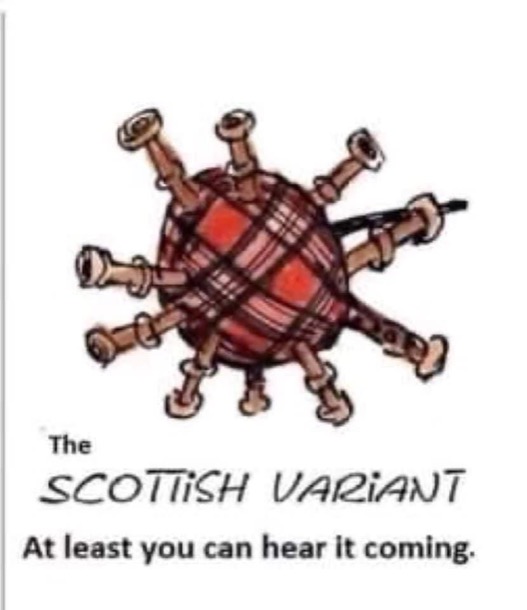
Viral Shedding
Over time we have learnt a lot about viruses. One of the terms we have learnt, along with “viral load”, is “viral shedding”. Once someone has recovered, and no longer infectious, there might still be dead viruses that trigger the various tests. They might still be “shedding” the virus for weeks, after recovering.
Wastewater Testing
The “shed” viruses, including broken up ones, or “viral fragments”, along with live, active viruses can be detected in all bodily fluids. Governments can monitor the presence or absence if Covid 19 in particular communities, by testing their sewage systems. Reporting the findings of such tests became part of daily information sessions. For example the residents of a particular area were advised to monitor symptoms more vigilantly, if virus was detected in their wastewater.
WHO, World Health Organisation
The WHO is a specialised agency of the United Nations responsible for international public health. They make statements, and run programs relating to global health matters. For instance they administer COVAX, a program aimed at vaccinating all peoples of the world against Covid 19.
Work from Home
“Those who can work from home, must work from home” was part of the lockdown orders. As people “returned to the office”, many chose to spend at least part of the week continuing to work from home. The social and economic implications have remained: people have to be coax “back to the CBD”, many have decided to move out of addresses closer in to the city, and adopted outer suburban and regional lifestyles.
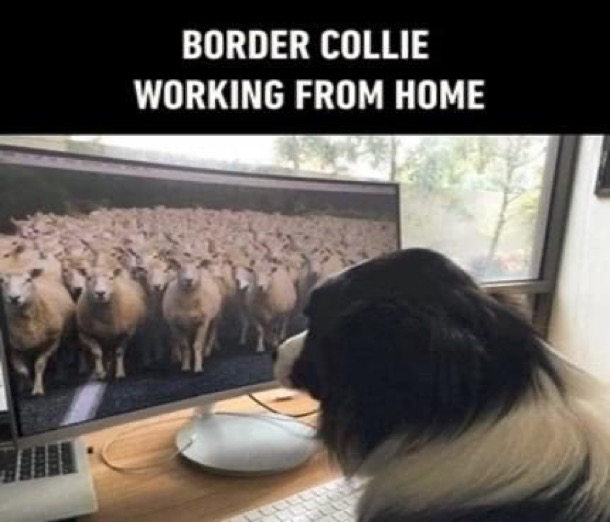
Zoom
An app that allows groups of people to “meet” remotely, to see and hear each other. It was a perfectly placed product as the world locked down. Zoom was used for everything from “viewing parties”, family get togethers, work meetings, classes and rehearsals to grannies reading a story to a child. Zoom meetings took on their own special culture. “You’re on mute”, “mute yourself”, “she’s in the waiting room”, The image that comes to mind is a computer screen divided into little squares, each with a badly lit head and shoulders sitting at a desk.
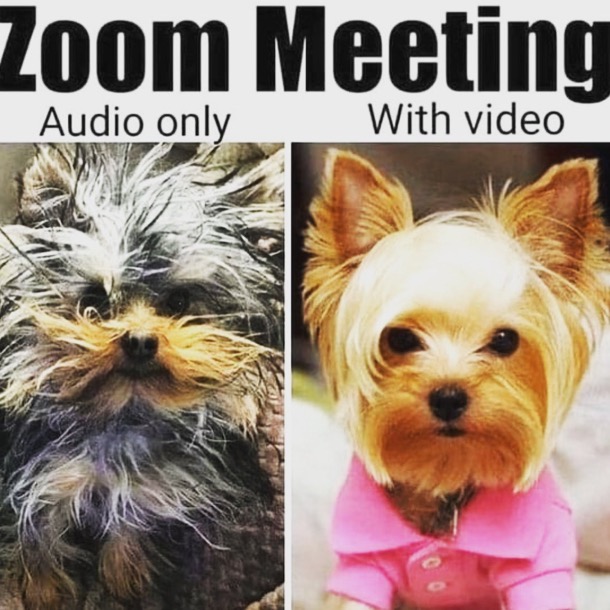
April 2022
With the Omicron wave reaching its peak in Australia, we have high vaccination rates and are now well and truly ‘living with the virus’. This means that, except for the vulnerable, and that include us over seventies, the general population are more or less living normal lives. There are still restrictions for the unvaccinated. They still cannot enter restaurants or theatres for instance. Isolation and stay at home orders now only apply to close contacts of a positive case, the definition of which is four hours or more close contact. Although mask wearing is no longer universal, masks are still required on public transport, and in aged care and hospitals. Retail staff, teachers and students are also still required to wear masks indoors.
As we end this post, we live in a changed world. Some adults and children have been left with mental and emotional scars and many people of all ages are living with long Covid, that is still little understood. Many families are also mourning their dead, and hospital wards remain under stress. The “work from home” phenomenon has been embraced by many and empty offices are still commonplace in the CBD.
The SARS-CoV-2 virus is probably here to stay. It will continue to evolve and we will continue to adapt.
Watch this space.
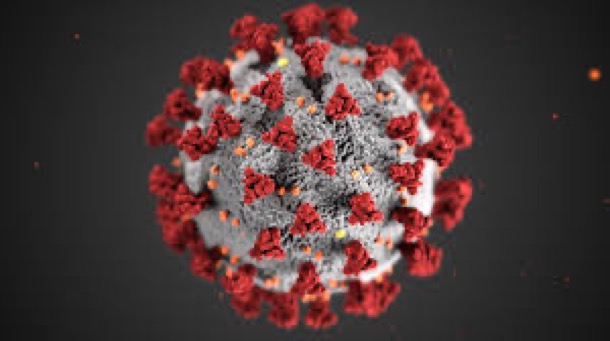
The world did indeed change, and the “year of Covid” is entering its third year. Turns out, Global pandemics don’t magically melt away, even when we triple vaccinate the wealthy nations.
So Sue and I are taking a new approach to our documentation of this chapter of our lives. Extended periods of shared experiences tend to generate their own vocabulary.
Here then is our annotated vocabulary of the Covid-19 pandemic in Victoria, Australia.
5/10 km limit
During Melbourne lockdowns 5 and 10 kilometre limits were introduced to reduce mobility and therefore the spread of the virus. Online tools were published to allow people to work out their permitted radius and movement from their home address.
Active cases
People with Covid who are still infectious.
Aerosol Transmission
Refers to the transmission of the virus by small liquid droplets carried in the air, in a cloud. Governments around the world and even the WHO were slow to accept expert opinion that Covid 19 was primarily spread by airborne transmission, as this had expensive ramifications for attempts to control spread of the virus.
Anti Masker
This refers to people who refused to wear masks. They saw it as an infringement of their personal freedom and often part of a bigger conspiracy by the State to wrest control from individuals. Exemptions for health reasons were available from GPs but only for a very limited range of conditions. Fines were imposed for non mask wearing.
Armchair Epidemiologist
There has been no shortage of ‘experts’ who have no expertise, experience or training, offering up their pearls of wisdom to anyone who will listen.
AstraZeneca (AZ)
The AstraZeneca vaccine was developed in the UK by an Oxford research team in 2020. It uses a weakened animal virus , chimpanzee adenovirus, called a viral vector, that contains the genetic code for the spike protein. Once it enters the body, it tells the cells to make copies of the spike protein. The immune cells recognise the spike protein as a threat and begin building a response to it.
AstraZeneca has been a very successful and useful vaccine, despite the bad press it received, due to a rare clotting side effect. Immunity does wane over time but it still protects from severe disease.
ATAGI
The Australian Technical Group on Immunisation is a Federal Government body that provides expert advice and recommendations to the Health Minister and the TGA (Therapeutic Goods Administration. ATAGI, probably not a household word pre pandemic, was now spilling from the mouths of politicians and very much in the public eye. Their role in determining which vaccines were safe was now of vital interest to young and old.
Booster
The vaccines we are currently using in Australia, all need a third dose, and even fourth, to avoid failing effectiveness over time. This has become known as being boosted.
Border Bubble
States with differing levels of infection have closed their borders to each other at different times. Border communities that share facilities have been allowed to cross State borders within a defined area called a Border Bubble.
Border Checkpoint
Police and Defence Force personnel checked people’s passes during times of Border closure. Lines of cars and trucks and ad hoc overnight camping spots, became the norm.

Bubble buddy
During the long second wave lockdown, the mental health of people who lived alone became a concern. To ease the isolation, people were allowed to nominate a bubble buddy, with whom they could spend time, albeit within strict guidelines. When this began to include life partners who lived in different houses, the Premier tied himself in hilarious verbal knots trying to explain the rules.
Casual Contact
Strangers who have the possibility of infecting each other, just by being in the same place, at the same time.
Check in
The technology of QR codes became the solution for knowing who could have been infected in a particular time and place. “Checking in”, using a government developed app on one’s smart phone, became an act of community minded altruism, and, later, a quick way of demonstrating one’s vaccination status.
Chief Health Officer
Professor Brett Sutton has been Victoria’s Chief Health Officer since March 2019. By the time he had appeared at a few Covid Press Conferences, he became very well known to Victorians. Quite quickly, the title became shortened to the “CHO”. CHOs of other states were also very public figures.
In Victoria, from the beginning of the pandemic until later 2021, when the powers were curtailed, the CHO had the legal power to order all sorts of restrictions.
CHOttie
Brett Sutton is an attractive man. He generated a lot of swooning, a lot of memes, a Facebook fan club and even some ‘merch’.


Click and Collect
Business and customers adapted quickly to commerce during a pandemic. After ordering on line, shoppers could choose home delivery, or the new “click and collect”, where their purchases were waiting for them at the front desk, or even put straight into their car boot.
Close contact
People designated ‘close contacts’ of a ‘case’ were required to self isolate for a set period of time. What it took to be a close contact, and how long they needed to isolate, varied between States, and changed over time.
Cluster
In major towns and cities, groups of cases tend to develop in particular areas. Epidemiologists call these ‘clusters’, which, along with a lot of other specialist words, became part of the common vernacular. Thus, in Victoria, there was the Shepparton cluster, the Black Rock cluster etc.
Community Transmission
While States of Australia were trying to eradicate the virus, there was a distinction drawn between people who caught the virus overseas, interstate, or whilst in quarantine, and those who caught it out in the community.
Contact Tracers
An army of specially trained communicators interviewed, often multiple times, people who had caught covid, to trace their movements and alert possible contacts. The development of QR codes and “checking in’ made this role less critical.
Contactless Delivery
A selling point for some businesses, was the ability to home deliver goods that had been purchased on line, without entering houses or being face to face with people. This became known as ‘contactless delivery’.
Coronacast
Dr Norman Swan, long term Medical Journalist with the ABC, began a daily podcast he called “Coronacast” during the first weeks of the pandemic. In it he answered questions, explained medical terminology, and provided commentary on the pandemic. It became essential daily listening.
Coronavirus
Sars stands for Severe Acute Respiratory Syndrome. Sars-Cov-2 is the virus that causes the disease Covid-19. The ‘corona’ refers to the halo of spike proteins that surrounds the virus.

Covid Response Commander
Jeroen Weimar had transformed Melbourne’s public transport system, as its Chief Executive. As the ‘test and trace’ processes in Victoria struggled during its first wave, Premier Dan Andrews turned to this no nonsense logistics expert. Jeroen brought ten of his trusted colleagues from Public Transport and fixed Victoria’s Covid Response processes. He became a popular public figure by fronting many press conferences and answering questions in his rapid fire, no nonsense style.
Covid Normal
Always just around the corner, and, so far, always stymied by yet another new variant, a “Covid Normal” life is the precursor to “living with the virus”. It meant not being officially locked down, but having some legal restrictions on normal life.
Covidiot
Those who behave idiotically during the pandemic, especially flouting the restrictions. The term was largely replaced by “antivaxxer”, once the vaccines were available.
Curfew
At the height of its fight to reach Covid Zero, in order to help police restrictions, and limit movement, the Victorian government imposed a 9pm curfew on all but essential workers. Other parts of the world had used this measure successfully. It made Melbourne a very, very quiet place.
Dan-stans
The “stans” are the countries of Central Asia that were mostly part of the Soviet Union, and remained under Russian influence after independence. Using the term with Dan in front of it links Victoria, under Premier Dan Andrews, with these near dictatorships. It suggests that Victoria is a dictatorship. “Dictator Dan” became a term of abuse levelled at the Premier during pandemic lockdowns.
Deep Cleaning
Early on in the pandemic, it was thought that, like colds and flu, the Covid virus was transmitted through droplets, which could settle in a room and remain a source of contagion for days. When transmission had occurred in a venue it was ‘deep cleaned’ to remove any traces of virus.
Diamond Princess
This cruise ship was the source of Australia’s first wave of infections. Passengers were allowed to disembark at Sydney, and travel on to all parts of Australia, taking the virus with them. There were questions about who made this decision, and an inquiry was held. Cruise ships, with their closely quartered populations, and inadequate air flow, turn out to be perfect breeding grounds for this virus.
Doomscrolling
The 2020 Macquarie Dictionary word of the year, Doomscrolling refers to the practice of continuing to read news feeds online, even though it is depressing, and endlessly negative.
Donut Day, Double Donuts (put on emojis)
During the early waves of the pandemic, in Victoria, we watched with interest, the daily infection numbers. For a long time, the first place go find them out was the daily Press Conference. And then, magically, they began to be a lower number each day. We waited for the magic zero cases. When it happened, it came known as donut day. Cafes across Melbourne sold out of donuts. and no new cases, no new deaths became a "double donut day”.

Double Vaxxed/Triple Vaxxed/Fully Vaxxed
Having had two, and later three vaccination doses, which allowed people to access some elements of the community, closed to the unvaccinated. eg “I’m fully vaxxed”, cited as a badge of honour in some circles.
Effective Reproduction Number
The Basic Reproduction Number (R) refers to the transmission potential of a virus in a population with no immunity. It is used in the calculation of the Effective Reproduction Number (Reff ) The Reff refers to the average number of secondary cases per infectious case in the current population, where there will be some immunity. This is a more complicated calculation, but is important as it tells the Health Department, in real time, how many people are likely to be infected by each positive case of Covid-19. When the number is high, the virus spreads faster. If the Reff is 1, case numbers will remain stable and if it is less than 1, the case numbers will drop.This is important information that assists Government in planning a response to any infectious disease outbreak, not just Covid-19.
Epidemiology
Epidemiology is the scientific study and analysis of the distribution patterns of a disease ( how when and where). World wide epidemiologists have been an integral part of the fight against the Covid 19 Pandemic. Using data and analysis, they have informed and advised governments, influenced policy and made recommendations on preventative measures.
The term Epidemiology of the Day also entered the lexicon at the daily Victorian press conferences, during the first and second waves. It referred to the distribution and case numbers and then morphed to include hospitalisations and eventually vaccination rates.
Essential Workers
Essential workers are those deemed by the government to be vital for the continued safety and care of the population. It included workers involved in food production, processing and distribution, and workers required to keep
supply chains functioning. It also included anyone involved in healthcare, from the hospital administration and doctors and nurses, to the cleaners and orderlies. The role of truck drivers was also appreciated and they received toots and waves from a grateful population at the height of the first wave, as the importance of their role became obvious.
Exposure site
Exposure site refers to any site, other than a private dwelling, where there has been infections reported. It could include work places, schools, public transport, shops etc.
Flatten the Curve
We became very used to looking at graphs of infection rates, especially during the early stages of the various waves of infection. During periods of exponential growth the graph headed skywards in an almost vertical line. Each day we looked anxiously for signs of a more gradual increase in the number of cases. This created a flatter curve, as the graph eventually headed down.
Fleeting contact/transmission
This term refers to fleeting non physical contact that can result in transmission of the virus. The term became an issue during the Delta wave as the virus had become more transmissible but it was difficult to validate. The conservative press and Opposition were keen to use it as a political football in order to discredit the CHO and Victorian Government’s handling of the crisis.
Flexible working
During the pandemic one of the health orders imposed to limit movement and contact was, ‘if you can work from home you must work from home’. Despite some unfortunate consequences, such as social isolation and difficulties for working parents also coping with home schooling, working from home was popular. Long term changes in how, where and when work is done are emerging, as flexible working is embraced. In the future, fewer hours will be spent in the office and more meetings and conferences will be on Zoom. The ramifications are already evident in empty CBD office towers, less traffic at peak hour, fewer interstate flights, and in an outer suburb, country and coastal real estate boom. People are realising they do not need to live close to work.
Freedom Day
Freedom Day was a term coined by UK Prime Minister Boris Johnson. Monday, July 19th 2021, was the day Boris invited citizens to ‘take back their freedoms’. It was the end of laws mandating wearing of masks and enforcement of social distancing. All businesses re-opened, including nightclubs and at midnight parties erupted all over the country and many partied all night.
Fully Vaxxed
Fully vaxxed refers to what is deemed at the time, to be the optimum dosage of Covid vaccine. At first it was two doses, but as more real life data emerges as well as new very transmissible variants, three doses is becoming the recommended dose, as it is in Victoria now.
Genomic Sequencing
This term is not specific to the pandemic of course, but we grew to learn all about it, as different variants of the virus began to appear. It does, of course, refer to the scientific process whereby the genetic makeup of a living thing can be determined. During the pandemic it has been the means of charting the major and minor genetic changes to the virus.
Get on the beers
When restrictions came into force, and people were getting used to the restricted life, an illegal dinner party was discussed at the daily press conference. Premier Dan Andrews admonished people for having mates around for drinking parties. His words were made into hilarious remix by a Brisbane duo, Mashd N Kutcher, which became one of 2020’s hottest 100 hits.
Being able to finally get on the beers, became a special Victorian celebratory phrase.on the first donut day, although Dan did say at his press conference that day, that he “might be going a bit higher up the shelf”.
https://www.youtube.com/watch?v=7hOK5JF5XGA
Hard Border
In a pre pandemic world, defence forces manning border outposts at state borders seemed impossible. We grew used to it. long lines of vehicles at the Murray River bridge, Border passes, exemptions, police number plate checks were all part of our ‘hard borders’. In 2020, we even had hard borders separating the Melbourne metropolitan area from regional Victoria.
Health Care Workers (HCW)
Of course we had nurses, doctors, ambulance drivers (‘ambos&rsquo
https://www.youtube.com/watch?v=5MIjynl6nYc
Herd Immunity
This is a term long used in epidemiology. It’s how most vaccines usually work. Enough of the population have antibodies protecting them from a disease, to protect the vulnerable: the young, the old and the immunocompromised. There is some evidence now that this may remain an epidemic disease where we never actually reach herd immunity, but have waves of infection, and variants remain a constant threat.
Home/Hotel Quarantine
People in quarantine isolate either at home, or at a “quarantine hotel”, which were repurposed, empty city hotels. Early on in the pandemic, people coming into the country had to quarantine for fourteen days at a special hotel. Victoria’s “first wave” happened because of a leak from a quarantine hotel. It was a huge scandal, and became very political.
Hotspot
An area where there was a lot of Covid was known as a “hotspot”. It could be as small as a shopping centre and as large as a group of suburbs. They were publicised so that people could be alert to symptoms, if had they been nearby, and keep away from them in future.
Household Contact
The most likely place people might catch Covid is from people they live with. If you had a “positive” member of your household, you automatically became a "household contact”, and thus had to be tested, and isolate for a set period of time.
Howard Springs
This area of Darwin had been an army base. It has many stand alone little huts, perfect for keeping a lot of people separated from each other, and from the general public. It has been used extensively for people coming from overseas, and it became the model for other new quarantine centres.

Hydroxychloroquine
This was an older longstanding treatment for malaria. In early 2020 it was trialed, unsuccessfully as a treatment for Covid 19. The reporting around its use was unskilful and it became politicised especially in Trump’s America. Hydroxychloroquine slipped into the revamped culture wars and their conspiracy theories, where it remains to this day.
ICU
This stands for Intensive Care Unit. The number of patients in hospital, in ICU and on a ventilator has become a measure of how problematic a covid wave is.
Index Case
This is an epidemiological term. An outbreak in a given area begins somewhere. Extensive contact tracing enables outbreaks to be traced back to the first person to catch it. This is the “index case”. It became a political blame game to find the index case and what led to their catching it.
Infectious period
A medical and epidemiological term. It refers to the days during which a case can pass the virus on to others.
Intimate Partner
During Lockdown, the plight of partners (friends with benefits) who do not live together needed to be dealt with. It became grounds for home visits, that were otherwise disallowed. A hilarious Press Conference where Premier Dan Andrews explained the rules, led to his reflection that he never considered that this conversation would be part of his job.
Intubated/Ventilated
The really horrible truth about severe Covid is that people are treated by having a machine breath for them. They have to be sedated for this and usually lie on their fronts. The tube down into their lungs often caused lasting damage to their throat or vocal folds. A daily number of people in each State in this situation has been reported as a measure of the severity of an outbreak.
Iso
There is a particularly Australian propensity for shortening and lengthening familiar words and names. Thus “isolation” becomes “iso”, as in “He’s in iso at home”.
It’s Not a Race
Prime Minister Scott Morrison did not order enough vaccines, nor did he have a usable plan for mass vaccination. He excused his inadequacy with this oft repeated phrase “It’s not a race, it’s not a competition”. It came back to haunt him when the Delta wave hit, and there was a rush to get vaccinated. Especially when it became clear that he had favoured NSW with vaccines and vaccination places, over the other States.
Ivermectin
Ivermectin is a veterinary worming medicine given to horses. Its use against Covid began in South Africa and many third world countries, in spite of evidence that it is not effective. Once the FDA in America and ATAGI in Australia warned against its use, it became adopted, like Hydroxychloroquine before it, as the darling of right wing conspirators.

Jab, jabbed, double jabbed, triple jabbed
Shorthand for having had the vaccine. Interchangeable with “vaxxed”.
Job Keeper, Job Seeker
During the first Lockdown, when so many people lost their jobs, or had much reduced hours, government assistance was provided. Job Keeper was given via employers which maintained employer/employee relationships, so that, when the economy “bounced back”, those jobs were still there.
Job Seeker replaced unemployment benefits for a while. The requirements to work as a volunteer, or apply for a set number of jobs per week, were dropped.
Karen
Wikipedia says “Karen is a pejorative term for a white woman perceived as entitled or demanding what is above the scope of what is normal”. Its use grew during the early months of the pandemic. In Victoria, it first came to general attention with a woman from Brighton, a wealthy suburb, complaining about being confined to the five kilometre limit because she had already walked around all the streets of Brighton. The label grew with a woman refusing to wear a mask in a Bunnings store and filmed arguing with a hapless employee.
Let it Rip
This has become synonymous with a government policy of not having any restrictions on movement, gathering, mask wearing etc. The sentiment presupposes that a particular population will eventually acquire herd immunity through most people becoming infected with the virus.
LGAs of Concern
This term is part of Sydney’s Covid history. During their Delta wave, the least wealthy Local Government Areas had the most infections. The kind of jobs people in those areas had couldn’t be done at home, and poverty made continuing to work essential. The LGAs of Concern suffered more Police patrols, curfews and greater lockdowns than the rest of Sydney.
Locally-acquired cases
In the beginning of the pandemic in Australia, the only source of infection were visitors from overseas. Eventually there was “community transmission”, people in the community catching it from other people in the community. These became known as “locally acquired cases”.
Lockdown
We first saw legally enforced stay at home orders in our News bulletins, when people in the Chinese city of Wuhan, where the virus was first discovered, had their doors welded shut to keep them in. This was followed quite soon with footage of deserted Italian cities, and people forced to stay inside their homes. Little did we know! We are completely acclimatised to “lockdown” now, even though it has become very politicised, and may never be used in Australia again.
Lockdown Light (Lite)
This term grew out of the rivalry between Victoria and NSW. The NSW government did not introduce the strict lockdowns we saw here in Victoria. Their limited restrictions were contemptuously ridiculed.

Lockout
After vaccinations became widespread, and eventually compulsory in certain industries, only those who were fully vaccinated could participate fully in the opened up economy. These were known as vaccine mandates. The Premier’s message became, “We’re not going to “lockdown” the economy, we’re going to “lockout” those who refuse to get vaccinated.”
Long Covid
Over time it became obvious that a sizeable proportion of those who had even mild disease, still had symptoms long after the acute phase had passed. “Brain fog”, fatigue, and a range of other symptoms last months and even years. This has become known as “long Covid”.
N95
An N95 mask is a mask that has 3 layers and fits securely around the face. If properly fitted, it filters 95% of airborne particles. During the Omicron outbreak they became widely available to the public as this variant was so transmissible. N95 masks are also worn by frontline workers and, in this scenario, have to be specially expertly fitted.
National Cabinet
National Cabinet was established in March 2020 in response to the pandemic and has replaced COAG for the duration of the crisis. It has been composed of the State Premiers, the Chief Ministers and Prime Minister. Initially, National Cabinet was able to work collaboratively on crisis management, but unfortunately, politics and individual agendas have since made the group less effective and able to make good decisions.
Negative Result
Negative result became the term we all wanted to hear after a PCR or RAT test. It became shorthand for, “I don’t have COVID”.
New Normal
Towards the end of 2020 and Victoria’s first big wave the Premier Daniel Andrews, began to talk of opening up at Christmas. He warned the life would not return to normal, but that it would be a “Covid normal”. This term morphed into “new normal” and was widely used.
North Face
During Victoria’s longest and strictest lockdown in 2020 Premier Danial Andrews held daily Press conferences where he often wore his North Face jacket. Our lives had shrunk so much and the daily press conference was such a feature of our day, that the appearance of the North Face jacket prompted much hilarious activity on Twitter and, in the Press, speculation on its symbolism.

Online Learning
During the lockdowns when schools were closed, remote learning of course meant on line learning. There was great discrepancy, mostly socio economic based, between different schools. Many teachers worked very hard to not only teach content, but also to help their students cope with the isolation. The Victorian Government provided IPads to disadvantaged children, in an attempt to level the playing field. Inevitably, some children emerged with gaps in their learning, that was addressed by employing extra tutors.
Pandemic
A pandemic is a disease that is prevalent world wide, rather than an epidemic that is restricted to a region or one area.
PCR Test
PCR means polymerase chain reaction. It is a test to detect genetic material from a specific organism, such as the SARS-CoV-2 virus. PCR testing stations were established and run by State Governments. As such large numbers of tests were required drive through testing stations appeared in many suburbs and during the height of the waves long queues of cars were very evident.


Pfizer
Pfizer is a world wide pharmaceutical company. Pfizer was amongst a number of companies who used RNA technology in the Covid vaccine.This technology uses a piece of genetic code of the virus to give instructions to cells in the body to make antigens and trigger an immune response. The advantage of this technology in vaccine manufacture, is that it can be easily adapted for changes in the Covid virus or indeed for other viruses that may emerge. In real world use, it has proven to also protect against severe disease.
PPE
PPE refers to the personal protective equipment usually associated with operating theatres. During the pandemic it was worn by anyone on the front line, in contact with infected people. N 95 masks, face shields, surgical gloves and plastic gowns were now commonplace.
Presser
This is shorthand for Press Conference. The Victorian Premier Daniel Andrews and his daily Presser, during Victoria’s waves of infection, became an essential part of our lives during lockdown. These Press Conferences differed from the norm as they were important information sessions using the experts involved in decision making, including of course the Chief Health Officer.. Another new aspect was the extent of the audience. The daily presser for us, was a shared experience with much communication by text.

Public Health Orders
These are legally enforceable orders made by the CHO and signed by the Premier. They included items such as mandatory mask wearing, density limits and curfews.
QR Code
QR stands for Quick Response Code and consists of a black pattern of squares on a white background that can be read by a camera. It was used during the pandemic to track people to facilitate tracing and the TTIQ strategy. It was also used to check vaccination status that was required for access to some venues, for instance inside dining and non essential retail.

RATS
Rapid Antigen Tests (Rats) are what Australians call Lateral Flow tests. The acronym has slipped so quickly into our vocabulary, that we hardly stop to think what the letters stand for. When the “Omicron wave” first hit, and numbers of cases rose very rapidly, there was a shortage of Rats, and huge demand on the PCR testing facilities. Eventually the supply increased, and the Government accepted notification of a positive Rat as evidence of infection. Most of the community has had to pay for their own Rats, but schools and many businesses have a temporary program of handing them out for regular testing.

Remote Learning
During the lockdowns, schools used the internet to continue schooling for kids. This is different from “home schooling’, where parents are responsible for the curriculum and its delivery. However, many parents, trying to work from home, and supervise their children’s lessons at the same time, found it just as much work.
Ring of Steel
During Victoria’s biggest lockdown, greater Melbourne was separated out from the rest of Victoria, which had fewer restrictions. This “ring of steel” around Melbourne was maintained through Police checkpoints on major highways, demands from rural businesses to see addresses, spot checks on number plates and pleas from the premier to protect regional Victoria.
Scomicron/Domicron
Prime Minister Scott Morrison (Scomo) wore a lot of blame for various aspects of the pandemic: not ordering enough Vaccines, the state of Aged care facilities, opposing State based regulations etc. At heightened times of blame during the “Omicron” wave, he was dubbed “Scomicron”.
When Dominic Perrottet replaced Gladys Berejiklian as NSW Premier, and he was held responsible for the huge wave of Omicron infections in his own and neighbouring states, Domicron as a nickname was impossible to resist.
Self isolation
The act of putting oneself in home quarantine, without being forced to and without being monitored by the authorities. This term also covers people who have chosen not to go back to participating in normal society while the chance of infection remains.
Singles Bubble
During the long lockdowns, it became obvious that people who lived alone were suffering greatly from the isolation. The rules were tweaked so that people could meet one other under strict conditions, to ease the loneliness. This became known as forming a “singles bubble”.
Social Distancing
This term has become synonymous with keeping oneself separated from other people. For instance, the official advice might suggest that masks should be worn, “when you can’t socially distance”. The practice of shaking hands, or hugging, has transformed into touching elbows in some circles. This has become an ostentatious way of “being careful”.
Super Spreader Event
Quite early on in the pandemic, it became obvious that not everyone who caught Covid, passed it on, but that a few people passed it on prolifically. They were called “super spreaders”, who had a large “viral load”. Events where many people caught it from one infected individual became known as Super Spreader events.
Travel Bubble
As numbers eased at various times, it became possible to allow limited travel between states and even countries. For instance, a Trans-Tasman bubble allowed tourists to travel between New Zealand and Australia.
TTIQ
Once a specialised epidemiological phrase, TTIQ stands for test, trace, isolate, quarantine
V shaped recovery
During the pandemic we became very adept at reading lists of figures, graphs, etc. In most of Australia, chasing “Covid Zero”, we were always looking forward to the end of particular waves. “Recovery” meant case numbers dropping. When they grew and dropped very fast, the graph looked like an inverted V.
Vaccine Efficacy
When the vaccines were first appearing, there was much discussion and argument about them. People who had never asked questions about the origin, manufacturing process, duration of their vaccines before, became “experts”. One of the catch phrases that became part of our new vocabulary was “vaccine efficacy”.
Vaccine Hesitancy
Some people decided the vaccine wasn’t for them. Others decided to wait for a particular brand, Novavax, which old, well tried technology. It became, over time, a very divisive issue. We learnt to distinguish between anti vaxxers, many of whom embraced a variety of conspiracy theories, and those just wary of new vaccines: the hesitant.
Vaccine Hub
The State Governments took on much of the mass vaccination program, which became known as the “vaccine rollout”. A specially trained workforce was skilled up for this program. They established huge facilities, many of them drive through, for people to have their first, second and later on, third vaccine injections. These were often tent sites, in large car parks, municipal facilities, churches, schools, even football clubrooms. The larger sites were known as “vaccine hubs”.
Vaccine Passport
Once all sectors of the community had had the opportunity to be vaccinated, it became mandatory to be fully vaccinated, to participate fully in various activities. To help the people who had to police this, a mostly digital certificate was created, and attached to an app. So, once it was set up, all one had to do to show one's “vaccine passport” to a restaurant or shopkeeper, was to bring it up on one’s phone and show the big green tick.
Variants
Many of the virus’ variants came from mutations in the virus' spike protein.
The first variant was initially detected in the UK in November 2020. The WHO decided to name the new mutations using the letters of the Greek alphabet to avoid stigmatising the country of origin. Thus this “UK variant” became Alpha. During the second half of 2021, we had global waves of the Delta variant, which was more infectious again and far more virulent. The 2022 variant, Omicron, has increased infectivity, but not severity of illness.

Viral Shedding
Over time we have learnt a lot about viruses. One of the terms we have learnt, along with “viral load”, is “viral shedding”. Once someone has recovered, and no longer infectious, there might still be dead viruses that trigger the various tests. They might still be “shedding” the virus for weeks, after recovering.
Wastewater Testing
The “shed” viruses, including broken up ones, or “viral fragments”, along with live, active viruses can be detected in all bodily fluids. Governments can monitor the presence or absence if Covid 19 in particular communities, by testing their sewage systems. Reporting the findings of such tests became part of daily information sessions. For example the residents of a particular area were advised to monitor symptoms more vigilantly, if virus was detected in their wastewater.
WHO, World Health Organisation
The WHO is a specialised agency of the United Nations responsible for international public health. They make statements, and run programs relating to global health matters. For instance they administer COVAX, a program aimed at vaccinating all peoples of the world against Covid 19.
Work from Home
“Those who can work from home, must work from home” was part of the lockdown orders. As people “returned to the office”, many chose to spend at least part of the week continuing to work from home. The social and economic implications have remained: people have to be coax “back to the CBD”, many have decided to move out of addresses closer in to the city, and adopted outer suburban and regional lifestyles.

Zoom
An app that allows groups of people to “meet” remotely, to see and hear each other. It was a perfectly placed product as the world locked down. Zoom was used for everything from “viewing parties”, family get togethers, work meetings, classes and rehearsals to grannies reading a story to a child. Zoom meetings took on their own special culture. “You’re on mute”, “mute yourself”, “she’s in the waiting room”, The image that comes to mind is a computer screen divided into little squares, each with a badly lit head and shoulders sitting at a desk.

April 2022
With the Omicron wave reaching its peak in Australia, we have high vaccination rates and are now well and truly ‘living with the virus’. This means that, except for the vulnerable, and that include us over seventies, the general population are more or less living normal lives. There are still restrictions for the unvaccinated. They still cannot enter restaurants or theatres for instance. Isolation and stay at home orders now only apply to close contacts of a positive case, the definition of which is four hours or more close contact. Although mask wearing is no longer universal, masks are still required on public transport, and in aged care and hospitals. Retail staff, teachers and students are also still required to wear masks indoors.
As we end this post, we live in a changed world. Some adults and children have been left with mental and emotional scars and many people of all ages are living with long Covid, that is still little understood. Many families are also mourning their dead, and hospital wards remain under stress. The “work from home” phenomenon has been embraced by many and empty offices are still commonplace in the CBD.
The SARS-CoV-2 virus is probably here to stay. It will continue to evolve and we will continue to adapt.
Watch this space.

The Year of Covid
30 03 21 13:53
Where were you when the world changed?
As we begin work on this new post, the first one since February, babies conceived during this plague year are being born. Their normal is a Covid normal. Masked faces, elbow bumps and social distancing have replaced hugs and smiles. They will not be expected to “soldier on” through their cold symptoms. Every one of their days has its “epidemiology”, spelled out in graphs and statistics.
Norman Swan, Medical Science journalist, elevated by the pandemic to superstar status, calls this period, as the world begins the slow process of mass immunisation, “the end of the beginning”. We watch with well worn trepidation. And as we do, it feels like an important time to remember the details, to look back at the milestones, to explore the changes.
THE BEGINNING
JANUARY 25 - MARCH 12
January 25 - First Australian case, Wuhan returnee
January 31 - Chinese returnees have to quarantine in a third country
February 11 - WHO names the novel coronavirus and its disease
February 27 - Travellers from China, Iran and Italy banned
March 2 - First Australian community transmission
March 8 - First Australian death
March 9 - Carey Grammar school closed - staff case
March 12 -WHO calls it a pandemic for the first time, Prime Minister announces first economic stimulus package. Australia has had 142 cases so far.
MARGARET'S STORY
January 2020 had begun for me in hospital, five days after my mastectomy. The East coast of Australia was on fire, and Thurra River camp was already gone by then. But for a cautious decision to cancel their booking, the family would have been evacuated from there, just before it burnt.
Just as my cool hospital room, with its expansive views, insulated me from the smoky, hot air outside, so my personal health crisis kept me from the full force of the terrible losses in Gippsland and New South Wales.
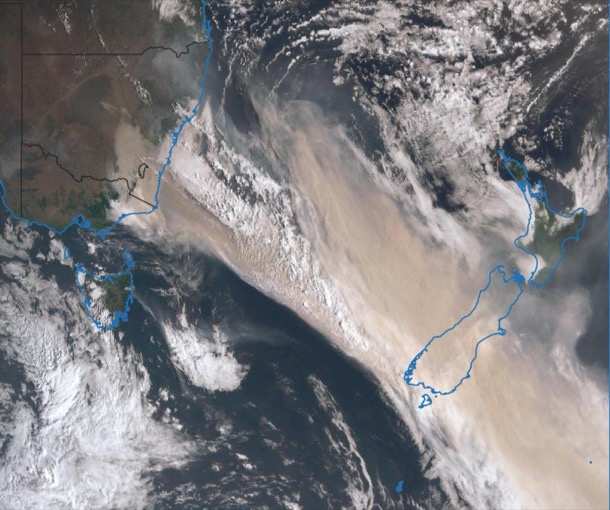
Smoke stretching to New Zealand
I planned to recover over January and be back into my busy life from the beginning of February. I would need a second operation, and had already begun to speculate on the least disruptive way to fit that into the months ahead.
News of a new virus from China was overshadowed by the antics of Trump and the horror of the fires. We heard from our friend Paul, the Point Hicks lighthouse keeper. He sent pictures from an unfamiliar burnt Thurra campground, and stories of sheltering in the lighthouse as the front approached. The first Australian Covid cases on January 25th hardly even caused a ripple in my world.
As February arrived, I felt my grand recovery plan was pretty much on track. I attended the first choir rehearsal, and Sue and I finalised the Recollections post we had begun in December. I was a little more tired than I had anticipated and I put off going back to singing lessons and to yoga. On February 7th I had a haircut. I had no way of knowing that it would be nine months before the next one.
Gradually, as the weeks passed and Autumn soothed the harshness of the Summer, my energy returned, and I began building back more fully. The first worrying Covid signs appeared: on March 2, there was the first Community transmission, and the first Victorian death on March 8. Nevertheless, I began Yoga classes, becoming more used to the lopsided feeling of a prosthetic left breast. The choir’s preparation for our Mikado season hotted up, and I spent lots of time matching costumes to singers, and practising my own part. Now those costumes are folded in boxes under my bed, as we tentatively plan a re-run in 2021.
The last regular engagement in my busy calendar was my weekly singing lesson. I made the arrangement to begin again on Tuesday March 10th, the day after the long weekend. On the Thursday we were all set to go to Bodhi’s twelfth birthday party.
That Tuesday, the WHO finally called it a pandemic and Dan Andrews, with Victorian cases at 36, set the first restrictions. Bodhi’s party was off, Singing lessons and Tuesday’s with Sue ended, and 2020 stretched ahead as a very different year.
THE BEGINNING - SUE'S STORY
By the time Margaret and I returned to our Tuesday routine in 2020 we had lived through a summer dominated by fire, grief, surgery and escalating concern about a virus in China.
In the weeks before Christmas, fires had ravaged much of NSW. Jono’s cousin Robert lost his house in the Blue Mountains and Sydney was covered in a pall of smoke, as mega blazes with towering flames devoured hectare after hectare of bush, destroying thousands and thousands of animals and hundreds of homes. We looked in horror at images of people huddled on beaches, as flames destroyed their town and firefighters were rendered powerless. Against this backdrop, in the week before Christmas, we were packing to go to Thurra. We began to have doubts: it was too dangerous. The bush was tinder dry after two years of drought in East Gippsland and the weather forecast was for hot, windy weather. After much deliberation and a family meeting at Thomas’, we collectively made the decision not to go! The kids were very disappointed, but to their credit, rallied, and began to plan what they could do instead. A week later, on January 31st, the Mallacoota fire roared through Croajingalong National Park, burning much of the park. Familiar places changed forever. Wingan Inlet, the Mueller Valley, the Thurra bridge and campground all gone.
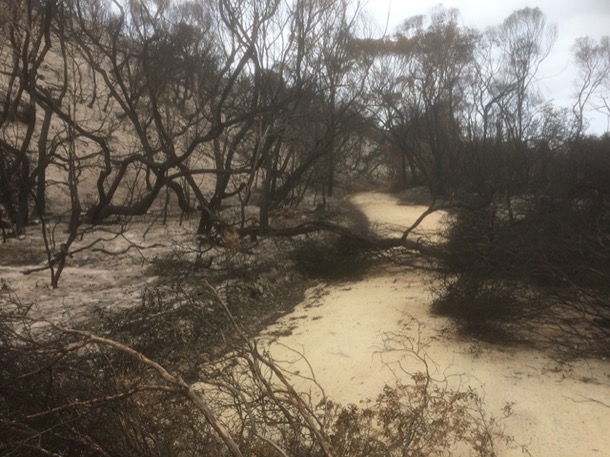
Thurra River Campground after the fire
January, and the fires were still raging as a creeping concern about the spread of a novel coronavirus in Wuhan appeared in news commentary; (COVID-19) the disease, caused by "severe acute respiratory syndrome coronavirus 2". These words were to become very familiar. On the January the 25th, we had a confirmed case of coronavirus in Melbourne, a returned Chinese citizen from Wuhan. This was the first case in Australia.
Three days later Anna was flying back from India via Singapore. We were very concerned that travellers from China would also be transiting through that transport hub. This is the first time I recall being concerned that the virus could infect a family member, or even someone I knew.
February, and Anna was back safely , the kids returned to school and the fire season continued, as the weather was hot and dry. Overseas, the news was alarming: news reports about escalating cases in China, Italy, Iran and on cruise ships. We began to learn more about how the virus spreads and how contagious it was. We closed our border to some foreign nationals, docking by cruise ships was restricted, and our neighbours cancelled their trip to India.
March, and Bodhi’s birthday on the 12th was cancelled! The consensus was: too many people and too risky in a small space. Jono and I went, vowing to socially distance. Unfamiliar with a behaviour that was to become second nature , we did not socially distance. That night, after discussion, we all decided that from now on birthday celebrations would need to at a safe distance and not inside. Little did we know that in 2020, Sara’s birthday in November, would be the only in-person celebration.
THE FIRST WAVE
MARCH 13 - MAY 11
KEY DATES
March 13 - 36 cases. National Cabinet formed.
March 15 - State of Emergency declared.First restrictions
March 19 - Ruby Princess disperses 2700 passengers around Australia
March 20 - Australia closes borders to non residents
March 22 - School holidays begin a week early. Run on toilet paper
March 30 - All Australian restrictions begin. Four reasons to leave home.
April 10 - Easter at home
April 15 - Home schooling begins
April 16 - Supermarkets introduce “old people’s hour”
April 27 - Massive ramp up in testing
May 5 - outbreak in Cedar Meats Abattoir and meat processing plant.
May 11- Some easing of restrictions
MARGARET'S STORY
During those few days, in that second week of March, there were many signs that things were hotting up, as case numbers reached thirty-six. We had scheduled a choir committee meeting before the next Monday night’s rehearsal, and emails shot round the committee.
By the time the Monday came around, Victoria was in its first day of “State of Emergency”. Only half our singers came. We insisted that everyone wash their hands, and we announced that we had decided to stop rehearsals until after Easter, but we went ahead and sang lustily. We knew nothing of aerosol spread. We had not yet heard about the Seattle choir, who, on March 10th also all washed their hands and sat a little further away from each other. Fifty-two of them were infected and two died.
It took another week before it really began to feel personal. We tut-tutted about the Ruby Princess debacle, though its real impact was yet to become clear. The Australian borders closed to tourists. But these things were just items on the News. The habit of listening to Dan Andrews live in Press Conferences began during this time. I remember sitting in the sun in the late morning, as he announced that school holidays were beginning a week early. My friend Laraine complained on Facebook that she had see people buying huge quantities of toilet rolls. We made jokes about it.
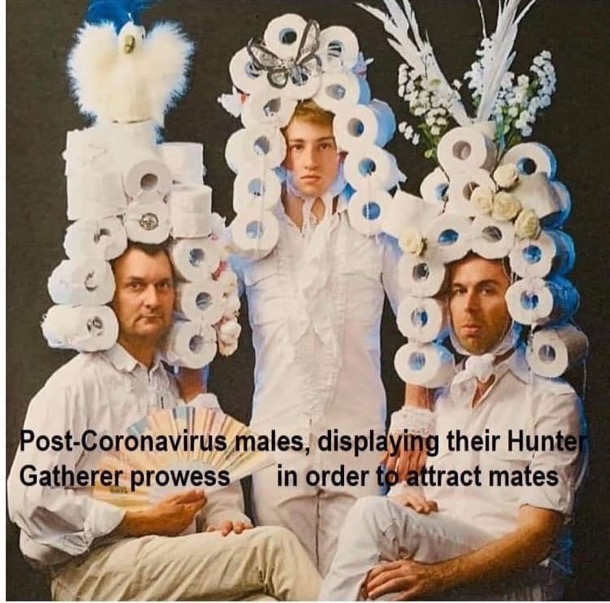
As the numbers of infected people in Australia climbed, the first frissons of alarm began. National Cabinet decided that all of Australia would restrict movement. This was the first time we heard the phrase “four reasons to leave home”, and “essential workers”.
We must have had some knowledge by then of infection rates. I remember waiting until fourteen days after Sage, our grandson, had had his last kinder session before we saw him. We poured over the legal document to see if we were allowed to call our visits “care”. I knitted him a “Bluey jumper”, listening to podcasts, filling in time.
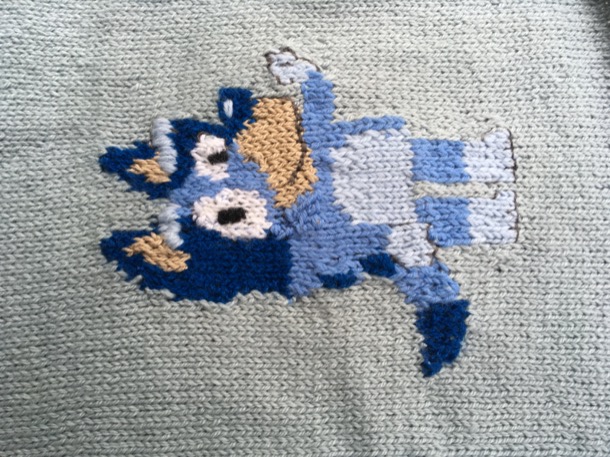
Life became quieter. There were noticeably fewer cars on the roads. Easter came and went. It was the first Easter Sunday for a long time that we had not had lunch with Chris’s parents. We watched Andrea Bocelli sing Panis Angelicus and stroll out to gaze up the empty Milan streets.
Here is the Facebook Post I did on April13th:
As I listened this morning to Andrea Bocelli’s beautiful Easter offering in the empty Duomo in Milan, and watched the footage of empty streets in the world’s great cities, I felt a sense of loss and sadness that I had seen in others, but hadn’t yet felt myself.
The footage reminded me of “The last Time I Saw Paris”, a sad song written by Jerome Kern in 1940. It would be another five years before Paris was liberated.
The camera in Milan roamed over a packed city. All those lives on hold, cooped up little apartments!
In New York, the only sound in the streets is sirens.
But then there is this.....
People in the Punjab, blinking like creatures exiting a cave, look to the north and there, hundreds of kilometres away are the white Himalayas. They have been hidden by pollution for decades.
Factory and vehicle emissions have dropped in China so much that two months worth of pollution reduction “likely has saved the lives of 4,000 kids under 5 and 73,000 adults over 70.”
According to The Climate Group, working from home has the potential to reduce over 300 MILLION tonnes of carbon emissions per year, and surely we will see a lot of that even after the lockdown. And there are stories of animals reclaiming the empty streets all over the world.
I downloaded the Panis Angelicus score in a key that suited me and taught myself to sing it. It became a piece of music I associate with that first Covid wave.
After the school holidays, the kids did not go back. Home schooling began. I was very glad that I was retired. We lived inside our little family bubble, relieving Michael and Katherine of their three year old twice a week. There was a weekly very early morning trip to the shops, first by Chris and then, when Woolworths introduced “old folk’s hour” at 7am, by me. Other than this we stayed home. My three quarters of a tank of petrol lasted until well into May.
Another new word in our vocabulary was Zoom. There were hilarious stories as the world got used to interactions with other people inside little square boxes…. like the man in a “ties and suits” business meeting, who stood up during the meeting, naked from the waist down, and deaf to the cries from his co workers.
During March I joined a couple of international virtual choirs, rehearsing via Zoom, and viewed later on YouTube. I recorded my contributions and sent them in for the engineers to do their magic. It was a way for choristers all over the world to recover something of what they had lost. I set my alarm for 3am to be part of the Self Isolation Choir’s Messiah “concert”. I chatted with fellow choristers on Facebook. But by May, I was losing interest.
My own choir, Singularity, “met” weekly from late April for the whole year. It meant listening only to the piano playing and singing your part by yourself, muted.
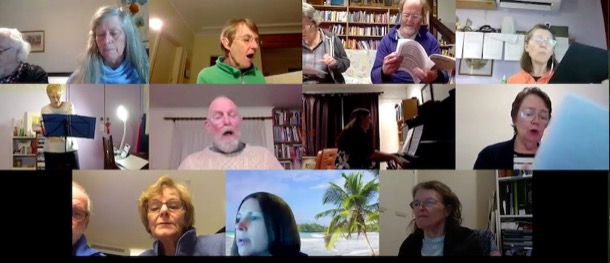
It was a poor imitation of the joy of voices harmonising together, but it was an important way to keep connected. We even held a little “soiree” concert, performing in turn for each other. I sang Panis Angelicus, my Covid anthem, with a YouTube karaoke backing track.
Even as “the numbers” subsided during May, and restrictions eased, singing together in the same room was unthinkable. We had all seen the Science of droplets and aerosols explained. Singing was going to be the last thing to come back. We would have to hang on and wait for a vaccine.
THE FIRST WAVE - SUE'S STORY
March is a jumble of memories and images ranging from the horror of dozens of ambulances lined up in New York streets, refrigerated shipping containers to store the dead outside overflowing hospitals, and the searing beauty of an Italian opera singer performing from her balcony, the aria floating over deserted streets.
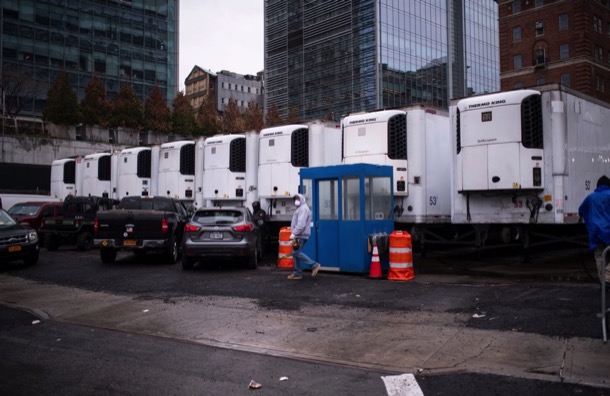
Makeshift morgue outside a New York hospital
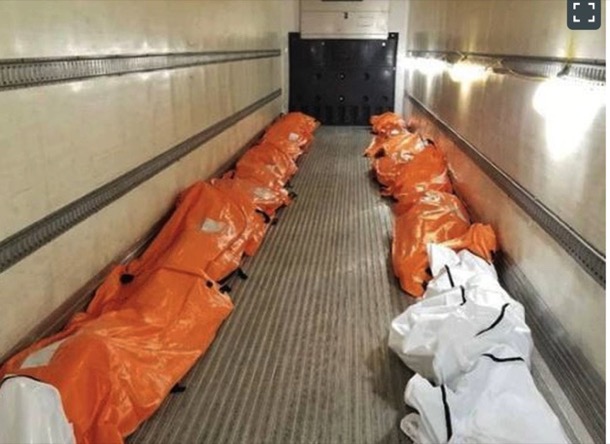
Bodies inside the refrigerator trucks.
The situation in many places overseas was dire but the virus was starting to get a hold in Australia. In this rapidly evolving situation, within the space of six days, a National Cabinet was formed for the first time since the Second World War, the Prime Minister boldly declared that he would still go to his beloved football match and Victoria declared a State of Emergency and limited gatherings. Four days later, the PM decided not to go to the football and instead closed our international borders to non-residents.
The virus was no longer a distant threat. It became personal. We didn’t feel elderly, but we fitted the category. Anna, Thomas, Riz and Tessa were concerned for us and, although quite challenged by the ‘vulnerable’ label, we did see the wisdom of restricting our contact with family and the outside world. Haircuts were cancelled, Poppy and Bodhi sat outside, when they were dropped at our place before school, and we no longer visited each other’s houses. Anna’s birthday, on the 18th of March, was the first remote birthday celebration of many to come.
End of March, and half a million cases globally, and, as cases grew in Australia, restrictions were imposed and life closed in. We felt very lucky to be an island nation and, as Australians, we felt that we were all in this together. All Australians were dealing with only being allowed to leave home for shopping, exercise, work and care giving. In Victoria, schools broke up a week early, and life changed.
Against this backdrop we tried to learn as much as we could about the virus. We faithfully listened to Norman Swann’s Coronacast, a daily podcast about the Coronavirus, and scoured the Internet for more information. In those early days the advice was that the virus was spread by touch. We carefully avoided touching surfaces, not knowing that aerosol spread was our biggest danger. When shopping, a few people wore masks and even gloves. We worried about eating fruit and vegetables that had been touched by other people, and we wiped down the groceries before putting them away. All cleaning materials, disinfectants, bleach, sanitiser and cakes of soap disappeared from supermarket and hardware shelves. Margaret and I both resorted to a bucket in the car boot containing a bottle of water, soap and a towel. I did the shopping, as Jono’s coronary artery disease put him in an extra vulnerable group.
As suburban supermarkets emptied, country supermarkets reported out of town shoppers, in mini buses, descending and stripping their shelves.
We were able to go to Billy Goat Hill, as it was our second residence, and we took a car full of food in case restrictions tightened and we were unable to get home. We also took our rate notice, in case we were challenged shopping in Alexandra, where we felt very conspicuous. Stories were circulating about people from the city shopping and bringing the virus with them. Apparently, very early one morning, the butcher in Yea was offered thousands of dollars cash for his entire stock of meat. He sent the gentleman away empty handed, telling him in no uncertain terms that he had local customers to supply. The panic buying lasted a few weeks and, once supermarket shelves filled up again, the community anxiety subsided.
Restricted in our activities and unable to see the children, grandchildren, family and friends, we began to spend more time at Billy Goat, where we did not even leave the property for shopping.
Lovely autumn days, and we had plenty to do. Days were dominated by hard work, and evenings by the latest Coronacast and the Covid news from Australia and around the world.
Easter, and having our evening drink, we listened to Andrea Bocelli sing to his deserted city. We could play it as loud as we our blue tooth speaker would allow. We sat in isolation, watching the You Tube clip on the iPad, as this accomplished tenor sang to his deserted city.
The rest of April was dominated by cool burning the kangaroo grass and cleaning up after thinning.
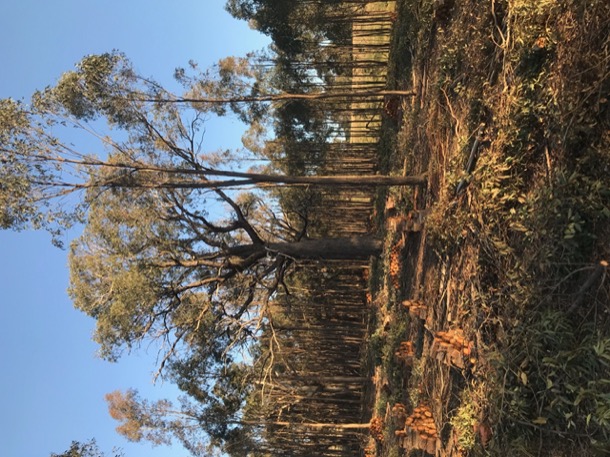
At home the children were coping with home schooling, and parents were supervising where needed. Thomas was still working so Tessa sat Poppy next to her and Bodhi worked on the kitchen bench.
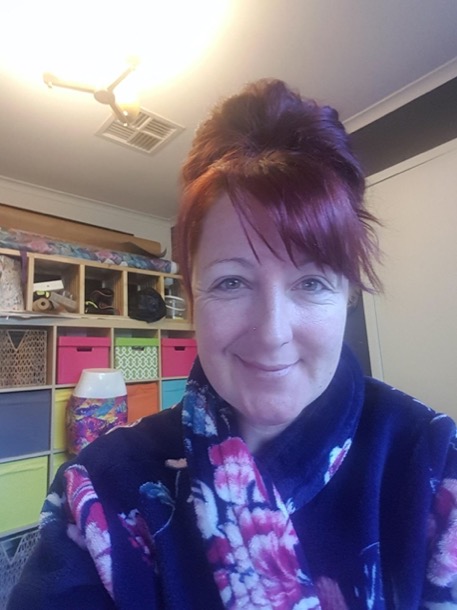
Tessa at the "office" in her dressing gown.
Riz continued to work from home and Anna did online tutoring with her students, while Aiden, Harper and Aurelia worked at their desks. As school work was often efficiently finished by lunchtime, the rest of the day was spent cooking, talking to friends or having ‘watch parties’. Although home schooling suited our grandchildren, it was challenging for some students, particularly the younger ones. I remember Anna telling me that the achievement for one session was having her small student sit on a chair in front of her screen, and not in her wardrobe. Teachers had new disciplinary issues to deal with, such as persuading a Prep student to put his sister down, get back on his chair and turn the microphone on.
Meanwhile, life continued at Billy Goat. Burning and thinning done and the weather now colder and very wet, we started on the erosion work.
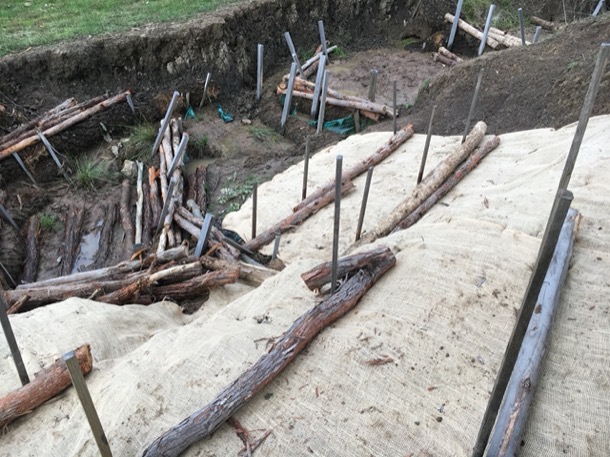
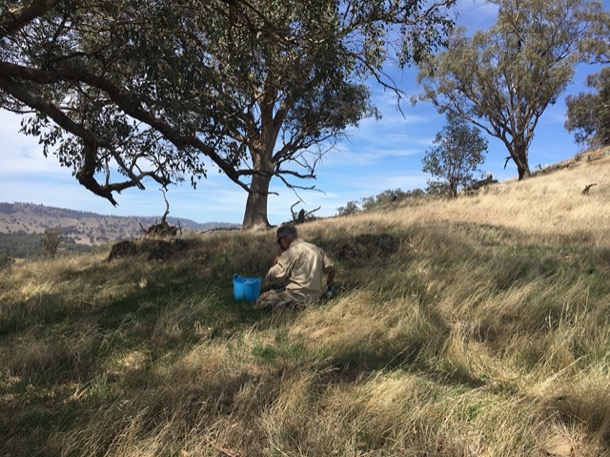
Numbers of daily cases were dropping and some there was some easing of restrictions. We decided however to remain cautious and still continue to restrict our lives and social interactions.
THE LULL
MAY 11 - JUNE 9
KEY DATES
May 11 - Some easing of restrictions
May 26 - phased return to classrooms begins
June 1 - Stage 3 restrictions eased
June 9 - last day of zero cases, numbers going up again
The month of May was a catch up time. We hoped it was a gradual return to normality. For most of May, kids were still doing home schooling, most people were working from home, shops and restaurants were still mostly shut, but there was a sniff of life opening up again.
Sue and Jono, after much deliberation, accepted an invitation to lunch at a friends’s house. Only one of the people present had been “out in the world”, so they decided to accept the risk. No “social distancing” happened of course. They sat around a table talking and laughing for several hours. There were no bad consequences, but it only happened once.
Hairdressers reopened during May, though appointment times were limited. Sue’s hairdresser had stories of cutting customers’ hair in the carpark.
I didn’t have my haircut during this time, but I did go the dentist to have a filling replaced; visited the doctor in Kallista, for drive through flu injections and had my car shock absorbers fixed at the Toyota service centre. Each of these felt like venturing out into the dangerous world. We preplanned, and chose our time carefully.
We had planned to ring Toyota late in the day, and say we couldn’t pick the car up, so that it would sit untouched in the yard overnight, and there would be “less virus” on all its surfaces when we collected it the following day. In the end, I picked it up and consciously only touched what I had to, and we didn’t drive it again for a few days.
Guests, where Sue and Jono had their car serviced, went one better. They wiped down every surface in the cars before their customers collected them.
The World Health Organisation, and our own authorities were still refusing to recognise that this corona virus spread primarily through the air, even though the evidence was mounting.
The other big appointment I had put off was my second breast operation. May seemed like the perfect time. Hospitals were available again, and I knew that I had to have it within a certain number of months. The surgeon agreed that this was “permissible surgery”, and we set the date for May 27th. The staff of Ringwood Private hospital did not wear any special protective equipment. Within that little haven, there might as well have been no pandemic.
A few days after, I had occasion to go to our local Ferntree Gully public hospital, and the contrast was noticeable. Everyone was masked. When asked about the difference, the doctor explained that public hospitals took everyone. They couldn’t screen their patients. So they needed to expect many more infection sources. I was careful to see nobody during the next two weeks.
Towards the end of May, there was even more gentle opening up. Schools returned to face to face teaching, gradually, class by class. Aurelia and Harper began footy training again. Alas, that little taste of normal life lasted only one week! As Autumn ticked over into winter, we watched with trepidation, as what would become Melbourne’s second wave appeared on the horizon.
As we begin work on this new post, the first one since February, babies conceived during this plague year are being born. Their normal is a Covid normal. Masked faces, elbow bumps and social distancing have replaced hugs and smiles. They will not be expected to “soldier on” through their cold symptoms. Every one of their days has its “epidemiology”, spelled out in graphs and statistics.
Norman Swan, Medical Science journalist, elevated by the pandemic to superstar status, calls this period, as the world begins the slow process of mass immunisation, “the end of the beginning”. We watch with well worn trepidation. And as we do, it feels like an important time to remember the details, to look back at the milestones, to explore the changes.
THE BEGINNING
JANUARY 25 - MARCH 12
January 25 - First Australian case, Wuhan returnee
January 31 - Chinese returnees have to quarantine in a third country
February 11 - WHO names the novel coronavirus and its disease
February 27 - Travellers from China, Iran and Italy banned
March 2 - First Australian community transmission
March 8 - First Australian death
March 9 - Carey Grammar school closed - staff case
March 12 -WHO calls it a pandemic for the first time, Prime Minister announces first economic stimulus package. Australia has had 142 cases so far.
MARGARET'S STORY
January 2020 had begun for me in hospital, five days after my mastectomy. The East coast of Australia was on fire, and Thurra River camp was already gone by then. But for a cautious decision to cancel their booking, the family would have been evacuated from there, just before it burnt.
Just as my cool hospital room, with its expansive views, insulated me from the smoky, hot air outside, so my personal health crisis kept me from the full force of the terrible losses in Gippsland and New South Wales.

Smoke stretching to New Zealand
I planned to recover over January and be back into my busy life from the beginning of February. I would need a second operation, and had already begun to speculate on the least disruptive way to fit that into the months ahead.
News of a new virus from China was overshadowed by the antics of Trump and the horror of the fires. We heard from our friend Paul, the Point Hicks lighthouse keeper. He sent pictures from an unfamiliar burnt Thurra campground, and stories of sheltering in the lighthouse as the front approached. The first Australian Covid cases on January 25th hardly even caused a ripple in my world.
As February arrived, I felt my grand recovery plan was pretty much on track. I attended the first choir rehearsal, and Sue and I finalised the Recollections post we had begun in December. I was a little more tired than I had anticipated and I put off going back to singing lessons and to yoga. On February 7th I had a haircut. I had no way of knowing that it would be nine months before the next one.
Gradually, as the weeks passed and Autumn soothed the harshness of the Summer, my energy returned, and I began building back more fully. The first worrying Covid signs appeared: on March 2, there was the first Community transmission, and the first Victorian death on March 8. Nevertheless, I began Yoga classes, becoming more used to the lopsided feeling of a prosthetic left breast. The choir’s preparation for our Mikado season hotted up, and I spent lots of time matching costumes to singers, and practising my own part. Now those costumes are folded in boxes under my bed, as we tentatively plan a re-run in 2021.
The last regular engagement in my busy calendar was my weekly singing lesson. I made the arrangement to begin again on Tuesday March 10th, the day after the long weekend. On the Thursday we were all set to go to Bodhi’s twelfth birthday party.
That Tuesday, the WHO finally called it a pandemic and Dan Andrews, with Victorian cases at 36, set the first restrictions. Bodhi’s party was off, Singing lessons and Tuesday’s with Sue ended, and 2020 stretched ahead as a very different year.
THE BEGINNING - SUE'S STORY
By the time Margaret and I returned to our Tuesday routine in 2020 we had lived through a summer dominated by fire, grief, surgery and escalating concern about a virus in China.
In the weeks before Christmas, fires had ravaged much of NSW. Jono’s cousin Robert lost his house in the Blue Mountains and Sydney was covered in a pall of smoke, as mega blazes with towering flames devoured hectare after hectare of bush, destroying thousands and thousands of animals and hundreds of homes. We looked in horror at images of people huddled on beaches, as flames destroyed their town and firefighters were rendered powerless. Against this backdrop, in the week before Christmas, we were packing to go to Thurra. We began to have doubts: it was too dangerous. The bush was tinder dry after two years of drought in East Gippsland and the weather forecast was for hot, windy weather. After much deliberation and a family meeting at Thomas’, we collectively made the decision not to go! The kids were very disappointed, but to their credit, rallied, and began to plan what they could do instead. A week later, on January 31st, the Mallacoota fire roared through Croajingalong National Park, burning much of the park. Familiar places changed forever. Wingan Inlet, the Mueller Valley, the Thurra bridge and campground all gone.

Thurra River Campground after the fire
January, and the fires were still raging as a creeping concern about the spread of a novel coronavirus in Wuhan appeared in news commentary; (COVID-19) the disease, caused by "severe acute respiratory syndrome coronavirus 2". These words were to become very familiar. On the January the 25th, we had a confirmed case of coronavirus in Melbourne, a returned Chinese citizen from Wuhan. This was the first case in Australia.
Three days later Anna was flying back from India via Singapore. We were very concerned that travellers from China would also be transiting through that transport hub. This is the first time I recall being concerned that the virus could infect a family member, or even someone I knew.
February, and Anna was back safely , the kids returned to school and the fire season continued, as the weather was hot and dry. Overseas, the news was alarming: news reports about escalating cases in China, Italy, Iran and on cruise ships. We began to learn more about how the virus spreads and how contagious it was. We closed our border to some foreign nationals, docking by cruise ships was restricted, and our neighbours cancelled their trip to India.
March, and Bodhi’s birthday on the 12th was cancelled! The consensus was: too many people and too risky in a small space. Jono and I went, vowing to socially distance. Unfamiliar with a behaviour that was to become second nature , we did not socially distance. That night, after discussion, we all decided that from now on birthday celebrations would need to at a safe distance and not inside. Little did we know that in 2020, Sara’s birthday in November, would be the only in-person celebration.
THE FIRST WAVE
MARCH 13 - MAY 11
KEY DATES
March 13 - 36 cases. National Cabinet formed.
March 15 - State of Emergency declared.First restrictions
March 19 - Ruby Princess disperses 2700 passengers around Australia
March 20 - Australia closes borders to non residents
March 22 - School holidays begin a week early. Run on toilet paper
March 30 - All Australian restrictions begin. Four reasons to leave home.
April 10 - Easter at home
April 15 - Home schooling begins
April 16 - Supermarkets introduce “old people’s hour”
April 27 - Massive ramp up in testing
May 5 - outbreak in Cedar Meats Abattoir and meat processing plant.
May 11- Some easing of restrictions
MARGARET'S STORY
During those few days, in that second week of March, there were many signs that things were hotting up, as case numbers reached thirty-six. We had scheduled a choir committee meeting before the next Monday night’s rehearsal, and emails shot round the committee.
By the time the Monday came around, Victoria was in its first day of “State of Emergency”. Only half our singers came. We insisted that everyone wash their hands, and we announced that we had decided to stop rehearsals until after Easter, but we went ahead and sang lustily. We knew nothing of aerosol spread. We had not yet heard about the Seattle choir, who, on March 10th also all washed their hands and sat a little further away from each other. Fifty-two of them were infected and two died.
It took another week before it really began to feel personal. We tut-tutted about the Ruby Princess debacle, though its real impact was yet to become clear. The Australian borders closed to tourists. But these things were just items on the News. The habit of listening to Dan Andrews live in Press Conferences began during this time. I remember sitting in the sun in the late morning, as he announced that school holidays were beginning a week early. My friend Laraine complained on Facebook that she had see people buying huge quantities of toilet rolls. We made jokes about it.

As the numbers of infected people in Australia climbed, the first frissons of alarm began. National Cabinet decided that all of Australia would restrict movement. This was the first time we heard the phrase “four reasons to leave home”, and “essential workers”.
We must have had some knowledge by then of infection rates. I remember waiting until fourteen days after Sage, our grandson, had had his last kinder session before we saw him. We poured over the legal document to see if we were allowed to call our visits “care”. I knitted him a “Bluey jumper”, listening to podcasts, filling in time.

Life became quieter. There were noticeably fewer cars on the roads. Easter came and went. It was the first Easter Sunday for a long time that we had not had lunch with Chris’s parents. We watched Andrea Bocelli sing Panis Angelicus and stroll out to gaze up the empty Milan streets.
Here is the Facebook Post I did on April13th:
As I listened this morning to Andrea Bocelli’s beautiful Easter offering in the empty Duomo in Milan, and watched the footage of empty streets in the world’s great cities, I felt a sense of loss and sadness that I had seen in others, but hadn’t yet felt myself.
The footage reminded me of “The last Time I Saw Paris”, a sad song written by Jerome Kern in 1940. It would be another five years before Paris was liberated.
The camera in Milan roamed over a packed city. All those lives on hold, cooped up little apartments!
In New York, the only sound in the streets is sirens.
But then there is this.....
People in the Punjab, blinking like creatures exiting a cave, look to the north and there, hundreds of kilometres away are the white Himalayas. They have been hidden by pollution for decades.
Factory and vehicle emissions have dropped in China so much that two months worth of pollution reduction “likely has saved the lives of 4,000 kids under 5 and 73,000 adults over 70.”
According to The Climate Group, working from home has the potential to reduce over 300 MILLION tonnes of carbon emissions per year, and surely we will see a lot of that even after the lockdown. And there are stories of animals reclaiming the empty streets all over the world.
I downloaded the Panis Angelicus score in a key that suited me and taught myself to sing it. It became a piece of music I associate with that first Covid wave.
After the school holidays, the kids did not go back. Home schooling began. I was very glad that I was retired. We lived inside our little family bubble, relieving Michael and Katherine of their three year old twice a week. There was a weekly very early morning trip to the shops, first by Chris and then, when Woolworths introduced “old folk’s hour” at 7am, by me. Other than this we stayed home. My three quarters of a tank of petrol lasted until well into May.
Another new word in our vocabulary was Zoom. There were hilarious stories as the world got used to interactions with other people inside little square boxes…. like the man in a “ties and suits” business meeting, who stood up during the meeting, naked from the waist down, and deaf to the cries from his co workers.
During March I joined a couple of international virtual choirs, rehearsing via Zoom, and viewed later on YouTube. I recorded my contributions and sent them in for the engineers to do their magic. It was a way for choristers all over the world to recover something of what they had lost. I set my alarm for 3am to be part of the Self Isolation Choir’s Messiah “concert”. I chatted with fellow choristers on Facebook. But by May, I was losing interest.
My own choir, Singularity, “met” weekly from late April for the whole year. It meant listening only to the piano playing and singing your part by yourself, muted.

It was a poor imitation of the joy of voices harmonising together, but it was an important way to keep connected. We even held a little “soiree” concert, performing in turn for each other. I sang Panis Angelicus, my Covid anthem, with a YouTube karaoke backing track.
Even as “the numbers” subsided during May, and restrictions eased, singing together in the same room was unthinkable. We had all seen the Science of droplets and aerosols explained. Singing was going to be the last thing to come back. We would have to hang on and wait for a vaccine.
THE FIRST WAVE - SUE'S STORY
March is a jumble of memories and images ranging from the horror of dozens of ambulances lined up in New York streets, refrigerated shipping containers to store the dead outside overflowing hospitals, and the searing beauty of an Italian opera singer performing from her balcony, the aria floating over deserted streets.

Makeshift morgue outside a New York hospital

Bodies inside the refrigerator trucks.
The situation in many places overseas was dire but the virus was starting to get a hold in Australia. In this rapidly evolving situation, within the space of six days, a National Cabinet was formed for the first time since the Second World War, the Prime Minister boldly declared that he would still go to his beloved football match and Victoria declared a State of Emergency and limited gatherings. Four days later, the PM decided not to go to the football and instead closed our international borders to non-residents.
The virus was no longer a distant threat. It became personal. We didn’t feel elderly, but we fitted the category. Anna, Thomas, Riz and Tessa were concerned for us and, although quite challenged by the ‘vulnerable’ label, we did see the wisdom of restricting our contact with family and the outside world. Haircuts were cancelled, Poppy and Bodhi sat outside, when they were dropped at our place before school, and we no longer visited each other’s houses. Anna’s birthday, on the 18th of March, was the first remote birthday celebration of many to come.
End of March, and half a million cases globally, and, as cases grew in Australia, restrictions were imposed and life closed in. We felt very lucky to be an island nation and, as Australians, we felt that we were all in this together. All Australians were dealing with only being allowed to leave home for shopping, exercise, work and care giving. In Victoria, schools broke up a week early, and life changed.
Against this backdrop we tried to learn as much as we could about the virus. We faithfully listened to Norman Swann’s Coronacast, a daily podcast about the Coronavirus, and scoured the Internet for more information. In those early days the advice was that the virus was spread by touch. We carefully avoided touching surfaces, not knowing that aerosol spread was our biggest danger. When shopping, a few people wore masks and even gloves. We worried about eating fruit and vegetables that had been touched by other people, and we wiped down the groceries before putting them away. All cleaning materials, disinfectants, bleach, sanitiser and cakes of soap disappeared from supermarket and hardware shelves. Margaret and I both resorted to a bucket in the car boot containing a bottle of water, soap and a towel. I did the shopping, as Jono’s coronary artery disease put him in an extra vulnerable group.
As suburban supermarkets emptied, country supermarkets reported out of town shoppers, in mini buses, descending and stripping their shelves.
We were able to go to Billy Goat Hill, as it was our second residence, and we took a car full of food in case restrictions tightened and we were unable to get home. We also took our rate notice, in case we were challenged shopping in Alexandra, where we felt very conspicuous. Stories were circulating about people from the city shopping and bringing the virus with them. Apparently, very early one morning, the butcher in Yea was offered thousands of dollars cash for his entire stock of meat. He sent the gentleman away empty handed, telling him in no uncertain terms that he had local customers to supply. The panic buying lasted a few weeks and, once supermarket shelves filled up again, the community anxiety subsided.
Restricted in our activities and unable to see the children, grandchildren, family and friends, we began to spend more time at Billy Goat, where we did not even leave the property for shopping.
Lovely autumn days, and we had plenty to do. Days were dominated by hard work, and evenings by the latest Coronacast and the Covid news from Australia and around the world.
Easter, and having our evening drink, we listened to Andrea Bocelli sing to his deserted city. We could play it as loud as we our blue tooth speaker would allow. We sat in isolation, watching the You Tube clip on the iPad, as this accomplished tenor sang to his deserted city.
The rest of April was dominated by cool burning the kangaroo grass and cleaning up after thinning.

At home the children were coping with home schooling, and parents were supervising where needed. Thomas was still working so Tessa sat Poppy next to her and Bodhi worked on the kitchen bench.

Tessa at the "office" in her dressing gown.
Riz continued to work from home and Anna did online tutoring with her students, while Aiden, Harper and Aurelia worked at their desks. As school work was often efficiently finished by lunchtime, the rest of the day was spent cooking, talking to friends or having ‘watch parties’. Although home schooling suited our grandchildren, it was challenging for some students, particularly the younger ones. I remember Anna telling me that the achievement for one session was having her small student sit on a chair in front of her screen, and not in her wardrobe. Teachers had new disciplinary issues to deal with, such as persuading a Prep student to put his sister down, get back on his chair and turn the microphone on.
Meanwhile, life continued at Billy Goat. Burning and thinning done and the weather now colder and very wet, we started on the erosion work.


Numbers of daily cases were dropping and some there was some easing of restrictions. We decided however to remain cautious and still continue to restrict our lives and social interactions.
THE LULL
MAY 11 - JUNE 9
KEY DATES
May 11 - Some easing of restrictions
May 26 - phased return to classrooms begins
June 1 - Stage 3 restrictions eased
June 9 - last day of zero cases, numbers going up again
The month of May was a catch up time. We hoped it was a gradual return to normality. For most of May, kids were still doing home schooling, most people were working from home, shops and restaurants were still mostly shut, but there was a sniff of life opening up again.
Sue and Jono, after much deliberation, accepted an invitation to lunch at a friends’s house. Only one of the people present had been “out in the world”, so they decided to accept the risk. No “social distancing” happened of course. They sat around a table talking and laughing for several hours. There were no bad consequences, but it only happened once.
Hairdressers reopened during May, though appointment times were limited. Sue’s hairdresser had stories of cutting customers’ hair in the carpark.
I didn’t have my haircut during this time, but I did go the dentist to have a filling replaced; visited the doctor in Kallista, for drive through flu injections and had my car shock absorbers fixed at the Toyota service centre. Each of these felt like venturing out into the dangerous world. We preplanned, and chose our time carefully.
We had planned to ring Toyota late in the day, and say we couldn’t pick the car up, so that it would sit untouched in the yard overnight, and there would be “less virus” on all its surfaces when we collected it the following day. In the end, I picked it up and consciously only touched what I had to, and we didn’t drive it again for a few days.
Guests, where Sue and Jono had their car serviced, went one better. They wiped down every surface in the cars before their customers collected them.
The World Health Organisation, and our own authorities were still refusing to recognise that this corona virus spread primarily through the air, even though the evidence was mounting.
The other big appointment I had put off was my second breast operation. May seemed like the perfect time. Hospitals were available again, and I knew that I had to have it within a certain number of months. The surgeon agreed that this was “permissible surgery”, and we set the date for May 27th. The staff of Ringwood Private hospital did not wear any special protective equipment. Within that little haven, there might as well have been no pandemic.
A few days after, I had occasion to go to our local Ferntree Gully public hospital, and the contrast was noticeable. Everyone was masked. When asked about the difference, the doctor explained that public hospitals took everyone. They couldn’t screen their patients. So they needed to expect many more infection sources. I was careful to see nobody during the next two weeks.
Towards the end of May, there was even more gentle opening up. Schools returned to face to face teaching, gradually, class by class. Aurelia and Harper began footy training again. Alas, that little taste of normal life lasted only one week! As Autumn ticked over into winter, we watched with trepidation, as what would become Melbourne’s second wave appeared on the horizon.
Tuesdays at Number 10 - Appraisal and Reflection
18 02 20 13:28
Since we began to tell our family stories in September 2015, the day has changed from Wednesday to Tuesday, the world has changed and much has changed in our lives. Sage, Margaret’ s grandson has joined the family, all of Sue’s grandchildren are now at school, Margaret’s consuming interest is singing lessons and choir and Sue, having built a house with Jono, is now saving the grassland at Billy Goat Hill. Our children are busy in their lives, reaching or approaching milestones with zeros attached, and doing an excellent job of parenting the next generation In between all this they are finding time to explore their own interests. Last but not least, we are pleased that, in our 2020 photo, we do not look terribly much older than in 2015. Well, we think so anyway.
2015:
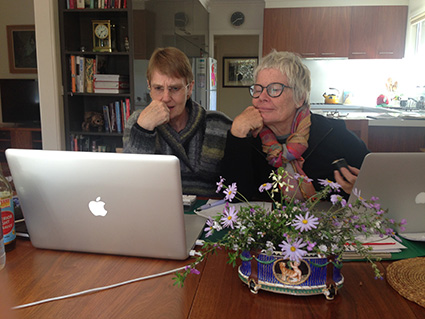
2020:
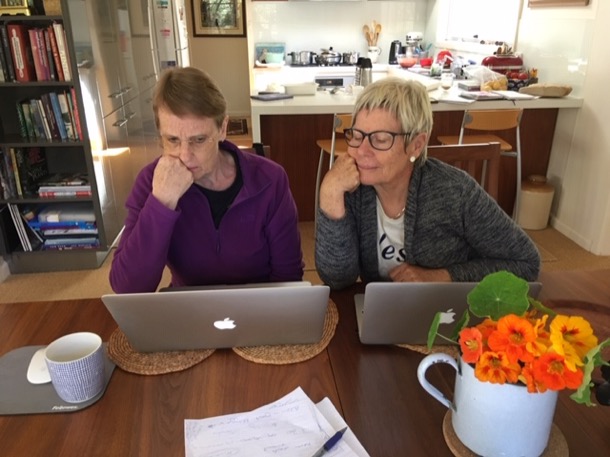
Some days we have a clear run at our work. Sitting at our computers, we spend four or five hours of concentrated writing, stopping only to confer about choice of photos, or leaping from useful website to relevant old document. This is rare!
Tuesday is one of the days Sue’s grandkids walk here straight from school. A tsunami of the day’s gripes, injuries, triumphs and challenges, told through mouthfuls of toasted cheese and chocolate, sweeps through our concentration.
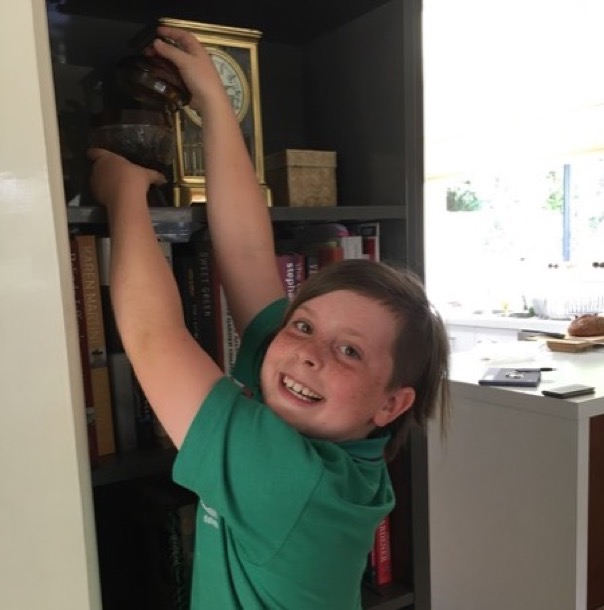
It seems to be just minutes after we have finished telling each other our own stories of the week. The kids settle into after school activities and we are back to our computers finding our concentration. Some days there are three lots of tutoring going on in various corners of the house.
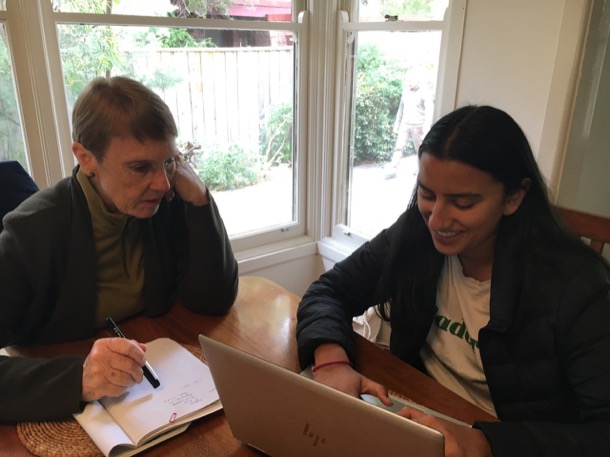
The phone seems to be constantly ringing. Cakes need to be made for a meeting tomorrow. Family members’ crises demand discussion, analysis, comfort, advice, admonishment, emergency dashes and cuddles. And throughout, tea must be made and drunk with due reverence.
When we began, we felt that we needed to post every week. We had spent so long planning and learning, and now, at last we were getting some material “out there”. The feedback was very positive, and it was such a buzz to press “publish” and see our work there on the internet.
We found that the few hours we had were not enough to write, find photos, set up the Soundcloud snippets, fiddle with the spacing and proof read. So we did homework, and came with long written passages.
That lasted a little while…
As the months and years rolled by, the frequency of posts decreased. In our defence, the posts got longer and more detailed… but in 2019, we did only three posts for the whole year! We plan to pick up our game … a bit!
In 2014, as we began the planning phase of our project, we decided that our story should be published in a digital form. Our initial concept was a website that would tell the family history, show connections through family trees and archive photographs and other information. Over a month or two, we brainstormed the concept, dredged up memories from the past and compared notes.
The research took us into the realms of website design and a whole new world. The website idea stretched us to the limit, as none of the formats available for purchase were flexible enough to meet our needs. Then the light bulb moment …… we could use the blog format. That way, we were not restricted to chronological order or tedious exploration of family trees. We could tell our shared family history One Story at a Time. So successful has the use of the blog format been, that we have hardly used other aspects of the website. Michael offered to host and caretake our website and is our tech support when all else fails. Thank you Michael.
Eventually we chose Rapid Weaver: the website format and style suited our purpose and it offered a blogging capacity. On-line tutorials followed and a steep learning curve. We are well pleased with our website choice and our decision in that light bulb moment to use the blog format. We have been free to follow stories, themes and lines of research across the centuries, telling one story at a time and building a picture of our family history both in Australia and sometimes in the countries from which those early immigrants came.
The impetus for this whole massive project was the responsibility of preserving Alice and Marge’s family history recordings and picking up from where they left off. Thus, the recordings have been one of the main sources of information. Before we began, I had spent a lot of days digitalising, ordering and summarising the five hours. This made them far more usable. Many of our posts use extracts from these recordings, sometimes just as a starting point, and sometimes as the basis for the whole post.
An example of a post we wrote based entirely around the recordings is “Great Great Grandparents” from November 18, 2015. There’s a hint of a little research in this post… we found out a bit about Bismarck, and a little about the flax industry in Ireland, but we took Alice and Marge’s remembered details as if that was all we could know about these people. Later, we were able to bring these people to life much more fully, and to learn much more about their lives.
We also have many original letters: chatty newsy letters, happy birthday letters, travelogues, love letters. We have only used these a few times, but, as an insight into the times and the lives of the people who wrote them, they are priceless.
One post we based entirely around our collection of letters, was October 14, 2015. “Twelfth Birthday Letters to Alice”. In the post, we used the letters written by Alf and Freda to explore these two very different personalities. We published photos of the letters but also transcribed them: old fashioned handwriting is not always easy to follow.
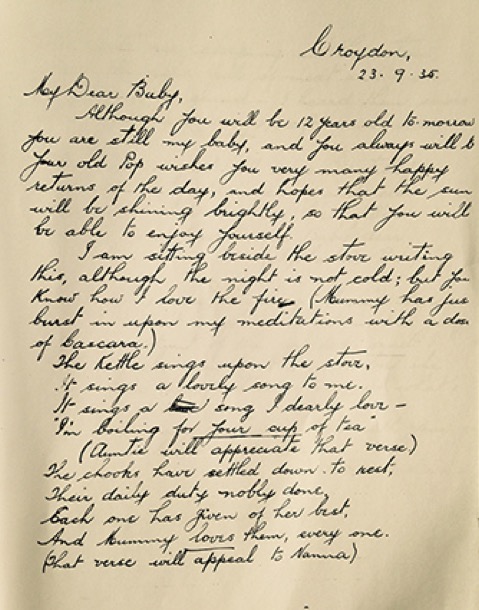
Family photos are a useful resource. Often they are stiff portraits, but even those show us something of the people and their environment.
There are also school reports and our grandfather’s teacher planning books. In “First year Teaching 1909”, published on November 4th 2015, we wrote about Alf’s life as a “pupil teacher” using pages from his planning book. At Katamatite State School, in 1909, he taught Reading, Proportion (Maths), History “The Invincible Armada”, Grammar “Complex Sentences” and “Drawing with Instruments”. Lessons were meticulously planned and commented on by the headmaster. All this is fascinating to the many family members who have become teachers themselves, in later years.
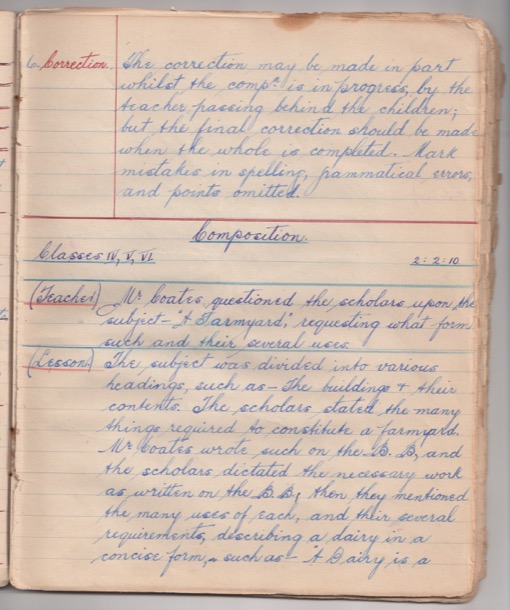
Recently we have been in contact again with our childhood friend, and in my case, ex husband, Fred. He, too, has become a retired person wanting to explore and record his past. Fred has been trawling through hours of analogue film, and painstakingly digitalising and restoring it. He has been very generous in sharing the results with us. We have only begun to share these bits and pieces through our blog, and already we have had some surprising results.
Most notably is “Poowong Footage” from August 29, 2018. The post explains what happened when we decided to share the precious film of a 1976 visit to our father and his second wife’s home, in Poowong. It resulted in renewed contact with Bev and her son Grant.
Fred at work:
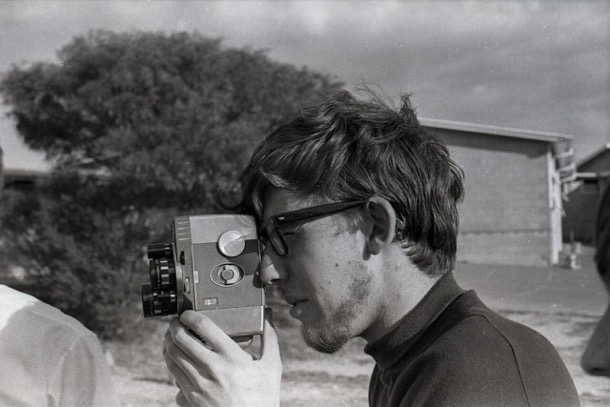
The most vast and useful resource has been the internet. It has yielded so much. Our favourite posts have been those that send us down an endless succession of rabbit holes, ranging widely through time and space. Along the way we have found suddenly that we are researching new territory. Sometimes, the jump-off point has been a story from Alice and Marge’s tapes, sometimes a skerrick of knowledge that we want to expand, sometimes just following the scent of the chase. A few of our favourite posts have been reporting on research that we have laboured over. The most notable of these is the Dau (Dow) Soldiers. (published on August 17, 2016)
We found these four great uncles, Frederick, Arthur, Charles and Wally by chance. We were exploring the seventeen children born to Martha and Joachim Dau of Heather Farm in Wandong. Our great grandmother had been one of those children.
Alice had mused about how there had been no war service in her wider family. And, when we had a sniff of these four soldiers, her father’s uncles, we were intrigued, initially about why she seemed to know nothing of them, and then about the four men themselves.
We researched two each, and spent many excited weeks ploughing through war memorial records, sharing “aha" moments, staring at grainy photos, reminding ourselves of the muddy and bloody battle sites of 1914-18.
When we finally wrote the post, telling the four men’s stories, it was with a sense of loss, like leaving behind new friends.
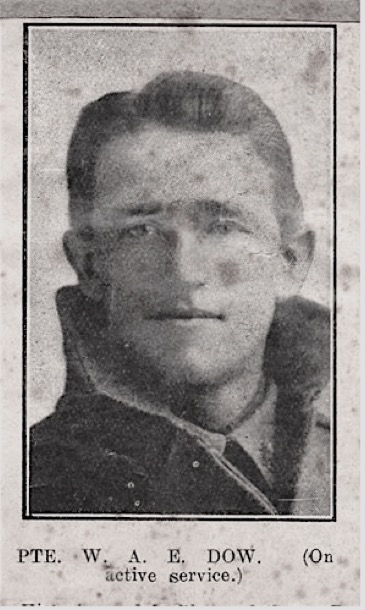
We knew a bit about the Pakenham Bourkes, (published on April 19, June 07 and July 05, 2017). Indeed, we had been to a reunion of the descendants of Michael and Catherine at the Pakenham Racecourse. In our research we found ships’ records, relevant letters from Governor Bourke and actual dates of where and when the family travelled and settled in what is now Pakenham. We faced the realisation that our great, great grandfather had probably physically chased the original Aboriginal inhabitants from his selection. Until we began digging, we had no idea of the scale of influence the family had had on the development of Pakenham. But actually seeing the number and prominence of the Bourke graves in the Pakenham cemetery brought it alive for us. We spent a day driving to the sites we had read about: the creek where Catherine and the children sheltered from a bushfire, the several historic homesteads, the preserved ruins of the original Bourke’s hotel chimney, the racecourse itself. Our excursion to Pakenham gave us a sense of connection to them.
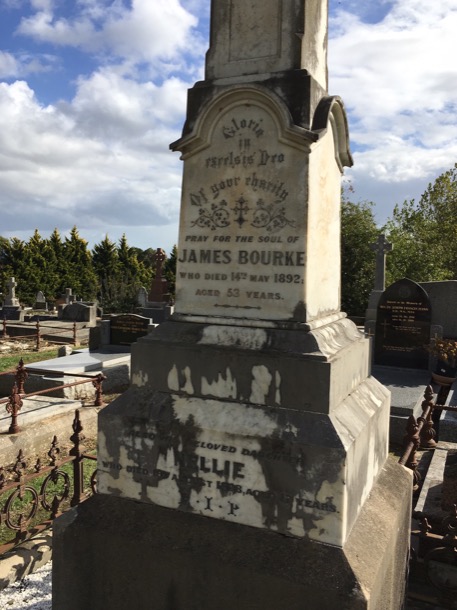
Another example of an excursion we enjoyed was our walk to school. (October 26, 2016) We parked outside our childhood home and set off round the corner and through the familiar streets. So many houses and gardens seemed unchanged in leafy Box Hill South. To us, as children, the long walk across the creek had been wild, weedy, always too hot, too cold or too wet. In 2016 we found it a precious wild place in suburban Burwood, a much used off-the-leash dog walking area, and the larger backyard of Deakin University.
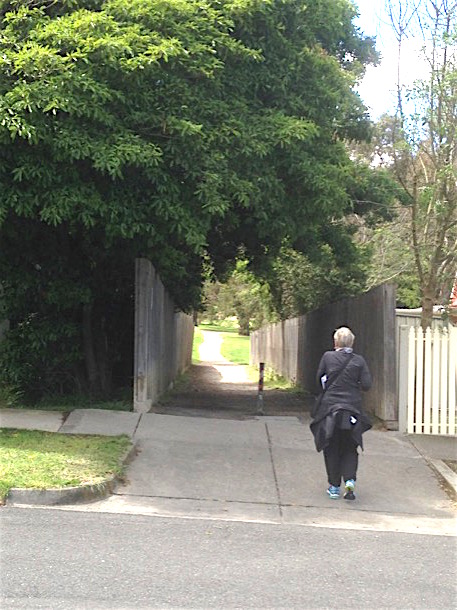
In “The Croydon Years” (published June 20, 2018) we traced our mother and aunt’s walk to school. The tapes had been a wealth of information about the Coates’ life at Croydon during The Great Depression of the 1930s. The Croydon museum gave us access to many photos and fleshed out the stories for us. But it was walking the streets and watching the kids playing the school grounds that made it come to life. Our musings over coffee, and in the car as we drove around looking for landmarks, filled in the gaps.
Our choice of topic has been fairly random… an idea would develop from a photograph, the time of year, a brainstorm. The balance between the minutiae of one person’s life and the exploration of grand ideas of our own time and that of our forebears, has developed apparently on its own. To illustrate this span we can take another look at two posts: “Auntie Bert, a sterling character”, published on March 12, 2019, tells the story of our great aunt, a single lady who played a big role in our lives, in fact in the lives of the whole family. In this post, our exploration of her life, and her generation as a whole, is largely based on Alice and Marge’s recollections. It focusses on one person’s life.
On the other hand, the exploration of political protest in our lives and that of our parents, crosses the generations and the decades. This was our “How to Rescue the World” (December 16, 2015). Approaching an overview topic like this gave us an insight into patterns that we were only dimly aware of. You could sum up the many, many issues that have fired up this family under the headings of the environment and social justice. Some battles we have fought many times, and they remain to be fought well into the future.
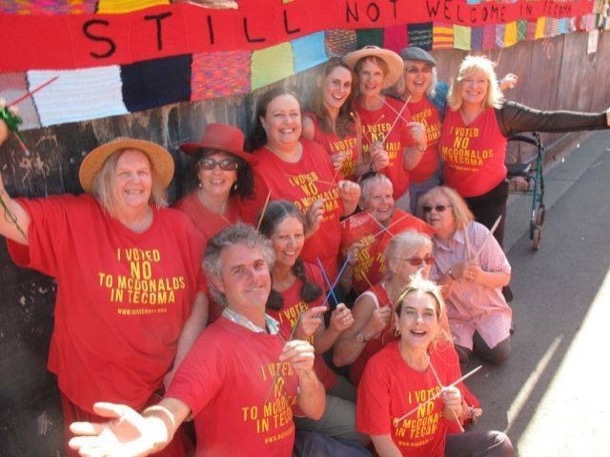
Over two hundred and forty days, and one thousand nine hundred and twenty cups of tea and coffee, we have published between forty to fifty posts.Our initial concept of a free form blog has been flexible for us to be able to explore the historical context of our stories.
On looking at our posts we are really pleased that we have been able in many cases to give a picture of the times in which the stories occurred and place them in an historical context. The post, ‘Cut out of the Will, (June 15th 2016), is a good example, We told the story of our parent’s wedding in the context of Protestant Catholic divide. Our father, a Catholic had to leave the Roman Catholic Church in order to marry our Protestant mother. This was an unusual occurrence, and one that brought with it both grief and anger. Dad’s sister begged him to not split the family and to ‘get married properly’ and his father cut him from the will. Hugh’s will names only two children when in fact there were three, our father being the third.
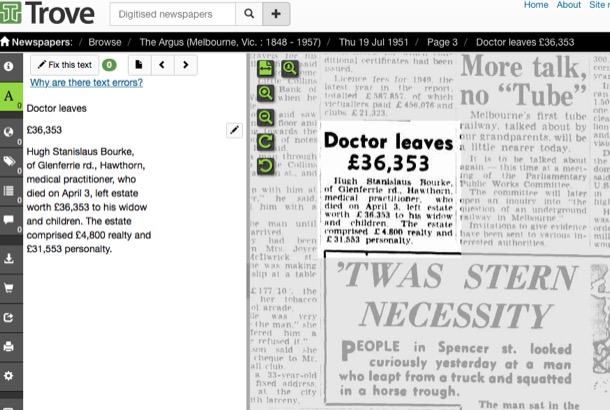
Another aim was to flesh out the lives of our forbears, about whom we knew little, and to give a glimpse of the very different worlds in which they lived. Because of the family divide, we knew very little of our father’s mother Grace McCormack. We discovered her birthplace was Molesworth, not Casterton, and through newspaper records of everything from cattle sales and property purchases, to society weddings, we were able to piece together a picture of her life. We even managed to take a photograph of the house in which she was born, Balham Hill, at Molesworth, (Grace McCormack, our other grandmother, May 25th, 2016)
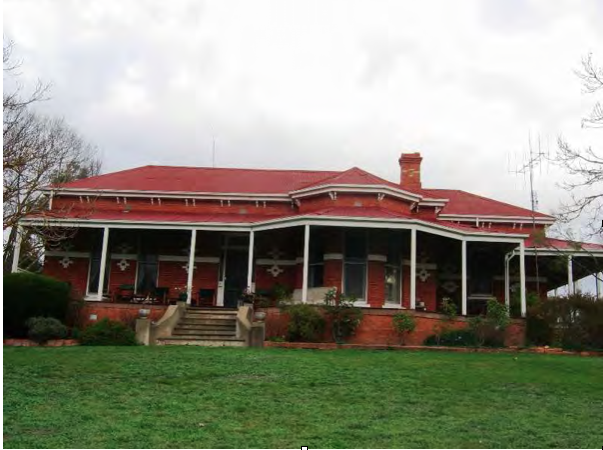
We were inspired by Alice’s decade by decade analysis of the history she had lived through. On April 4th, 2018, we attempted to pick up the task, from 1950, where Alice finished, and take the process through to 1980. This was a very overt way of fitting our story into the greater story of our generation. We found, as Alice had, that we were able to find the “flavour” of each decade, and look at our own lives with that framework.
The finished post thus takes every decade from 1850 through to 1980, a vast sweep of Australian history, and places within it the individual and collective lives of our family.
We have found the research and telling of the historical context particularly fascinating and hope that it will give current and successive generations an historical context and a sense of their place in history. We are also pleased with our website choice and our decision to use the blog format. We have not been restrained by having to use historical order or follow the structure of the family trees. Consequently we have gone where curiosity and interest has led us. It has been a delight and a pleasure, full of fun and challenge.


